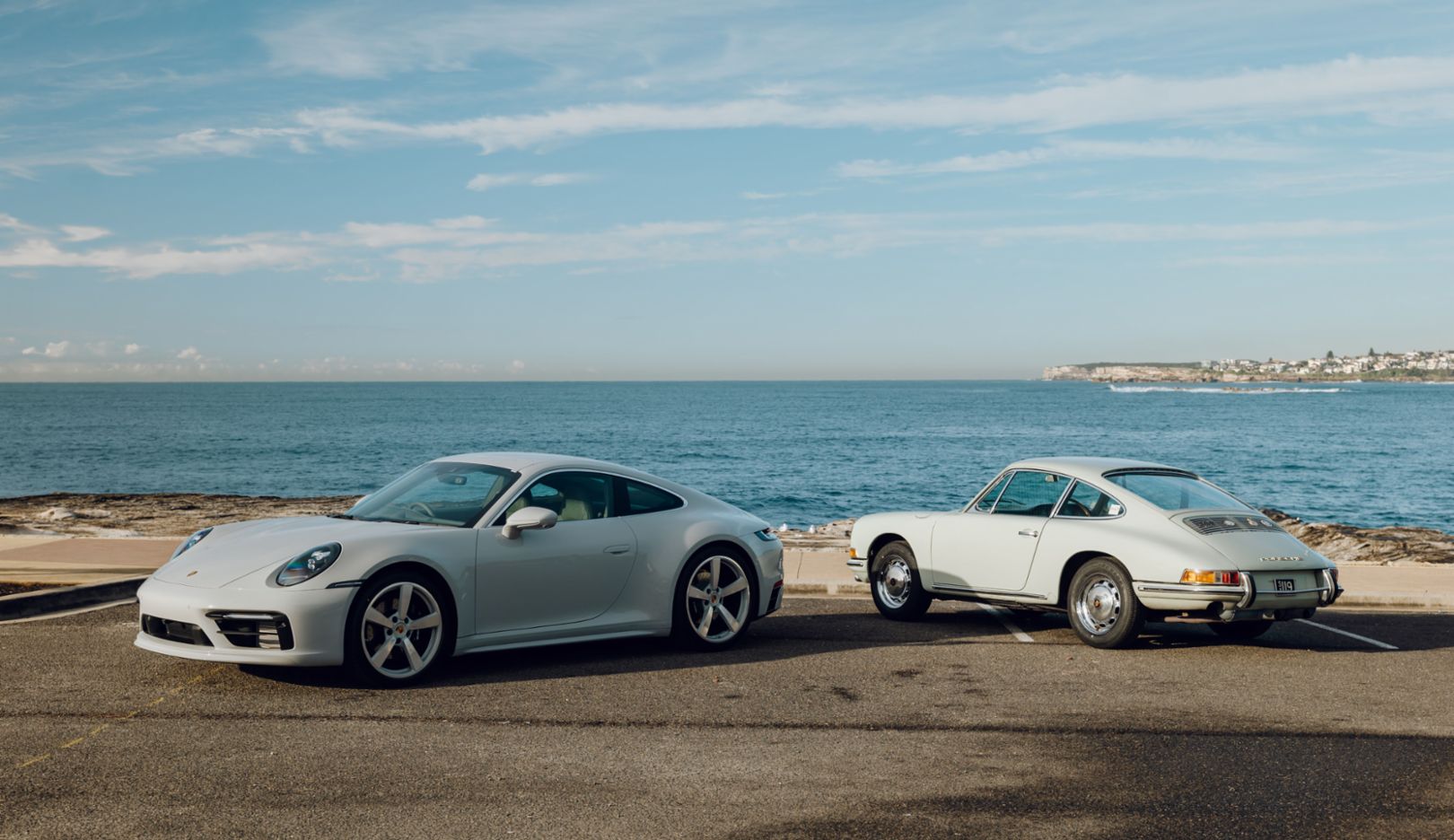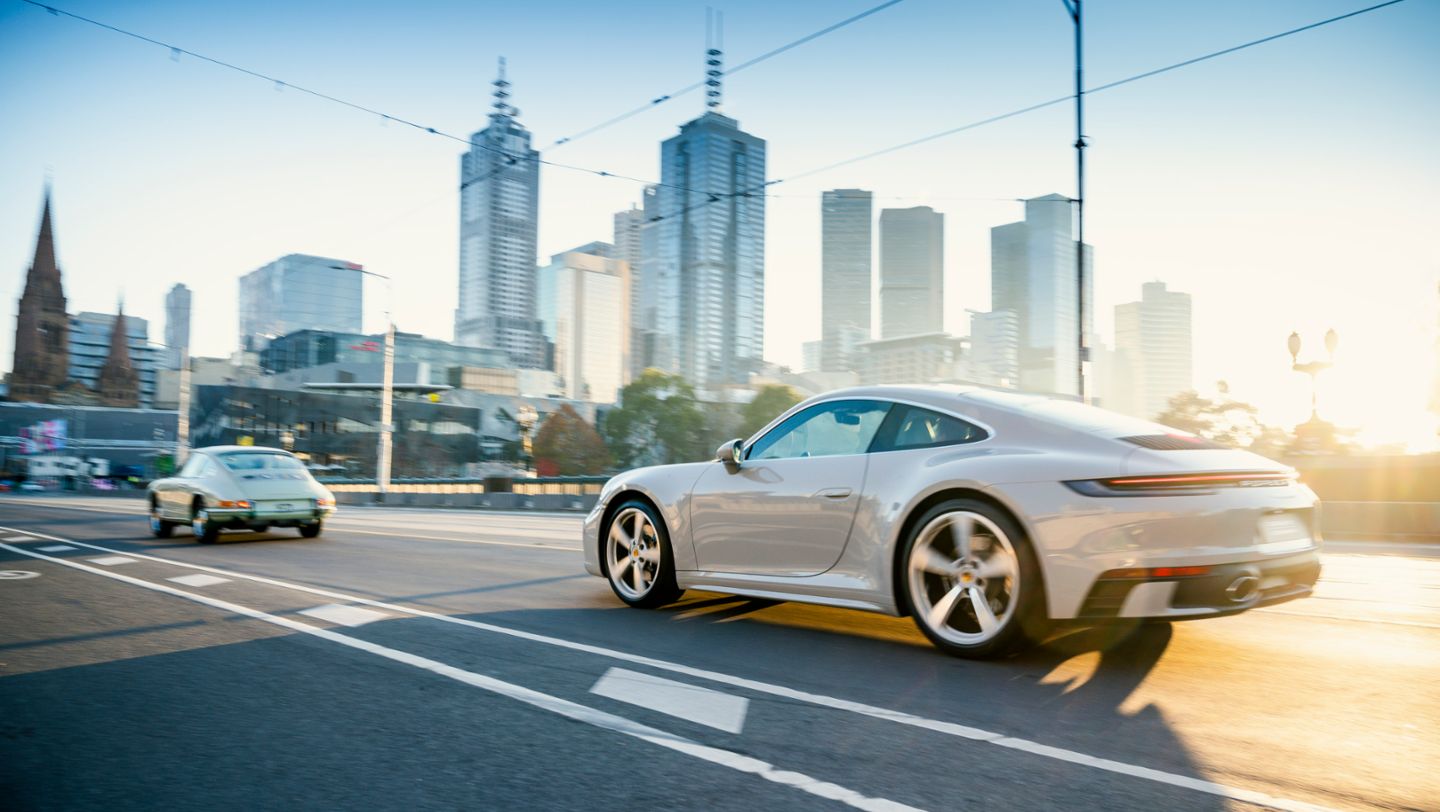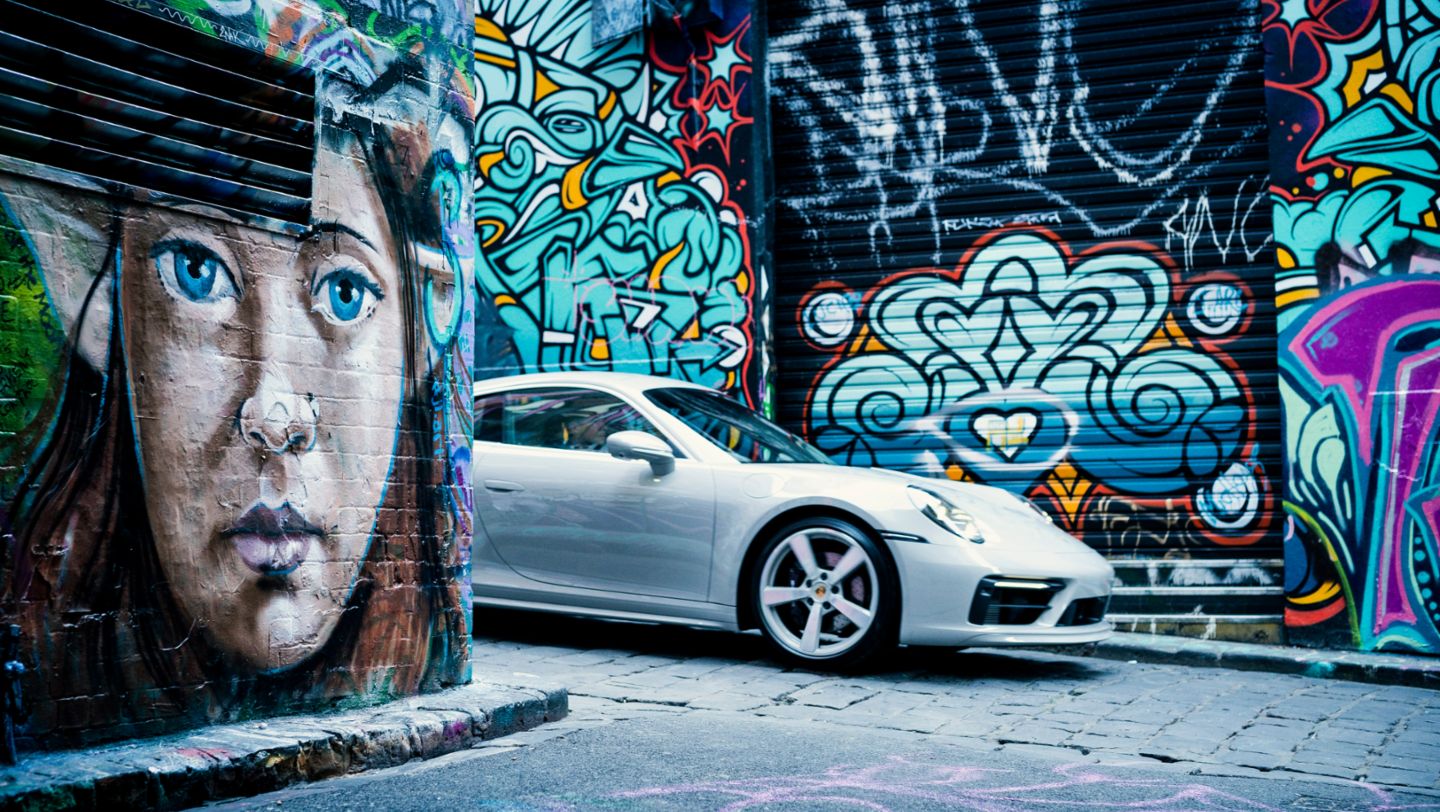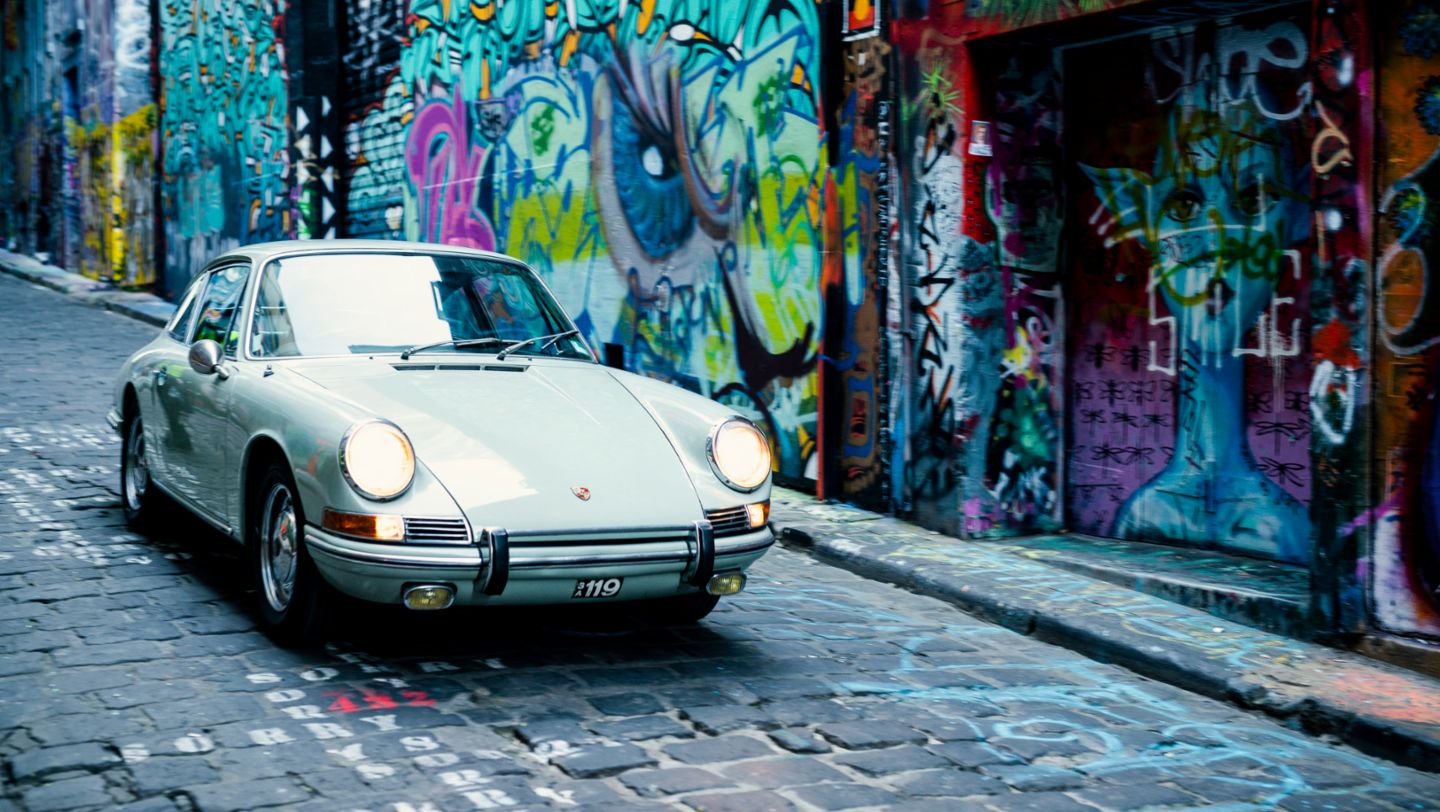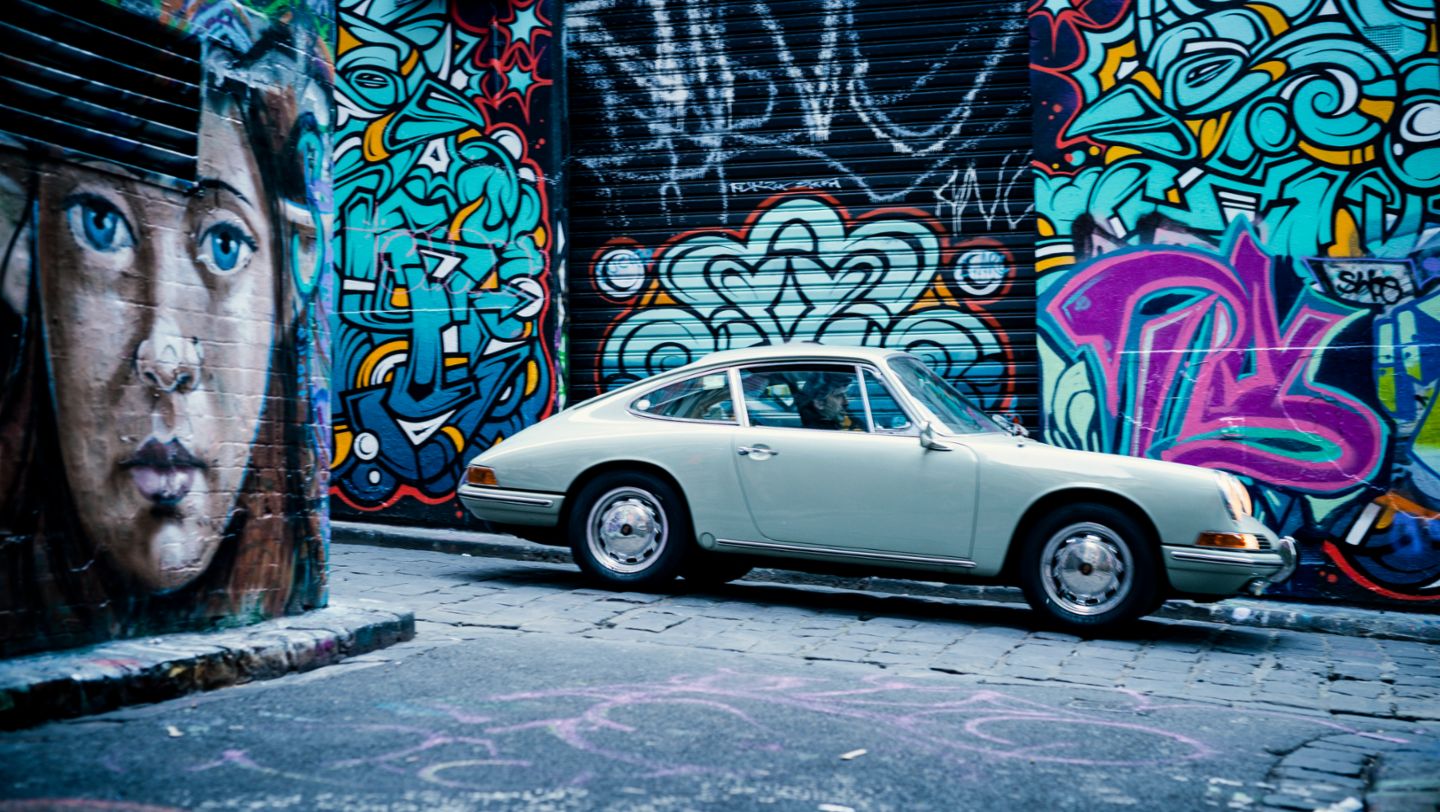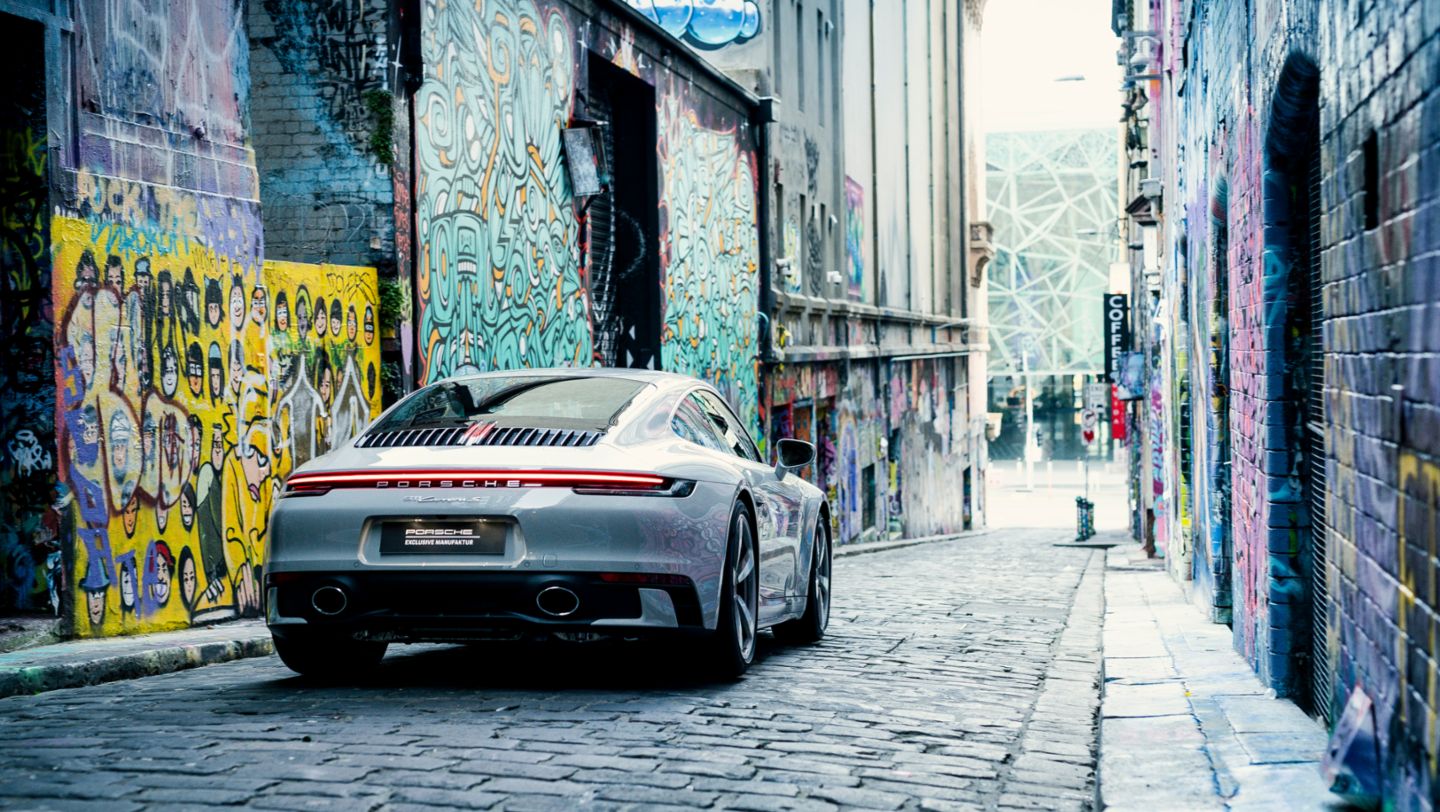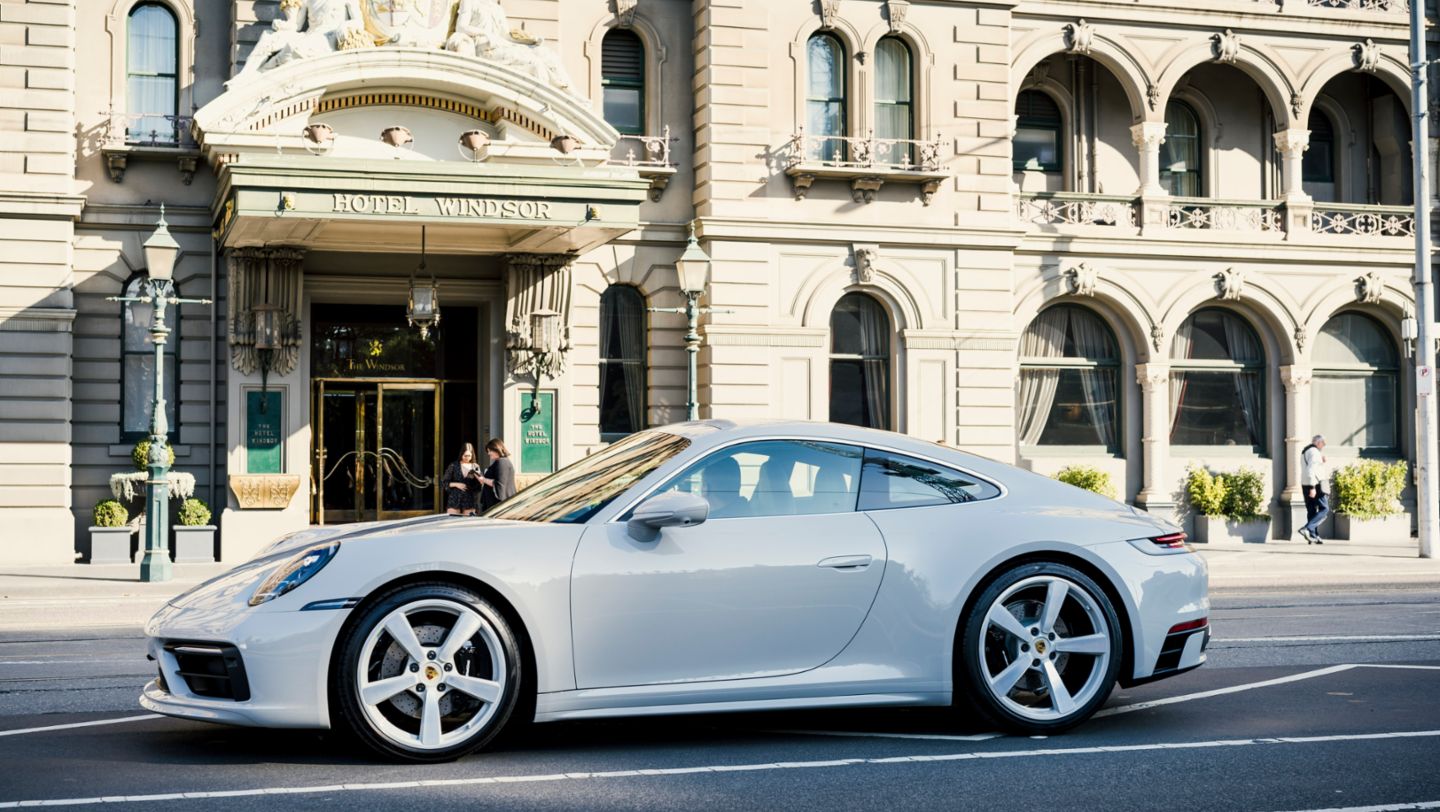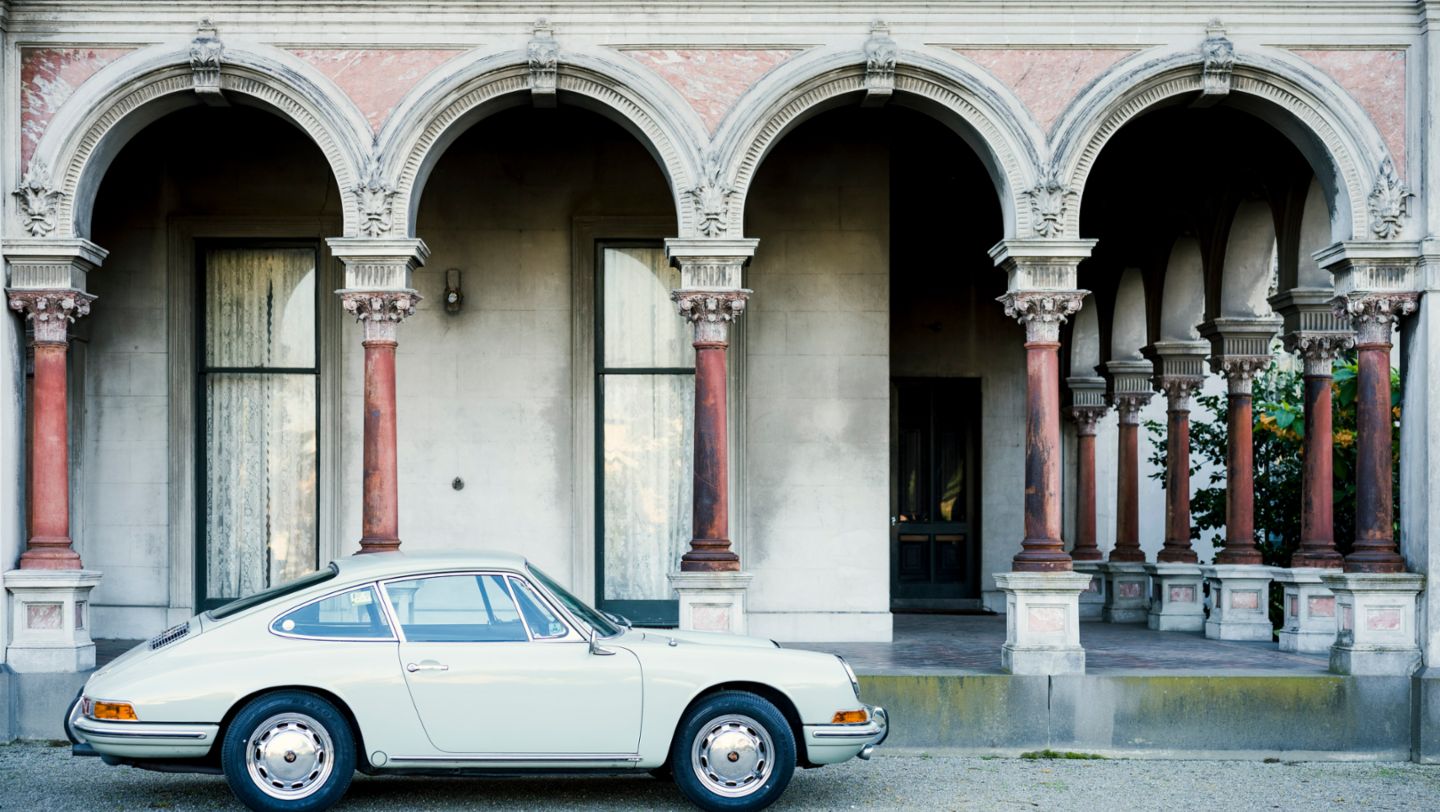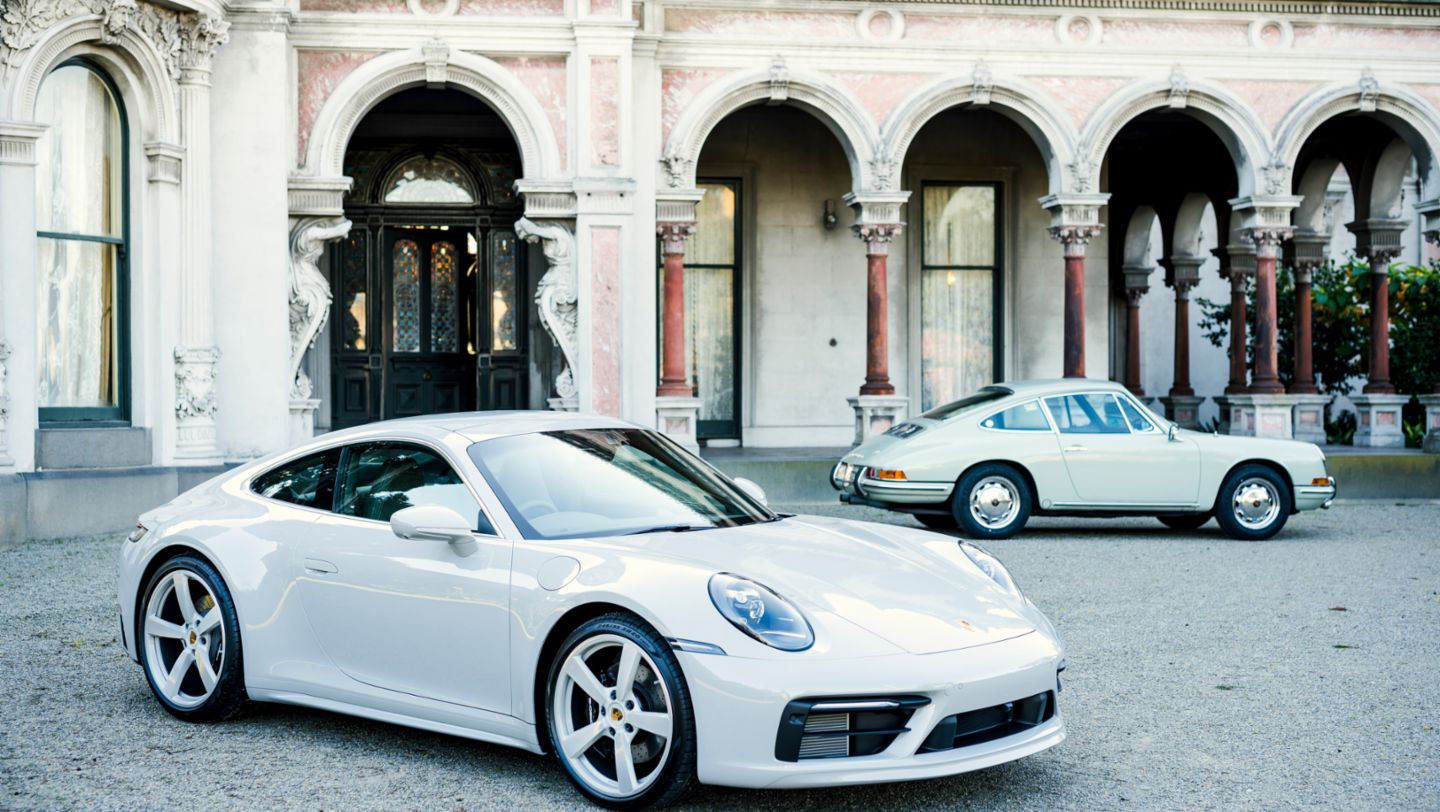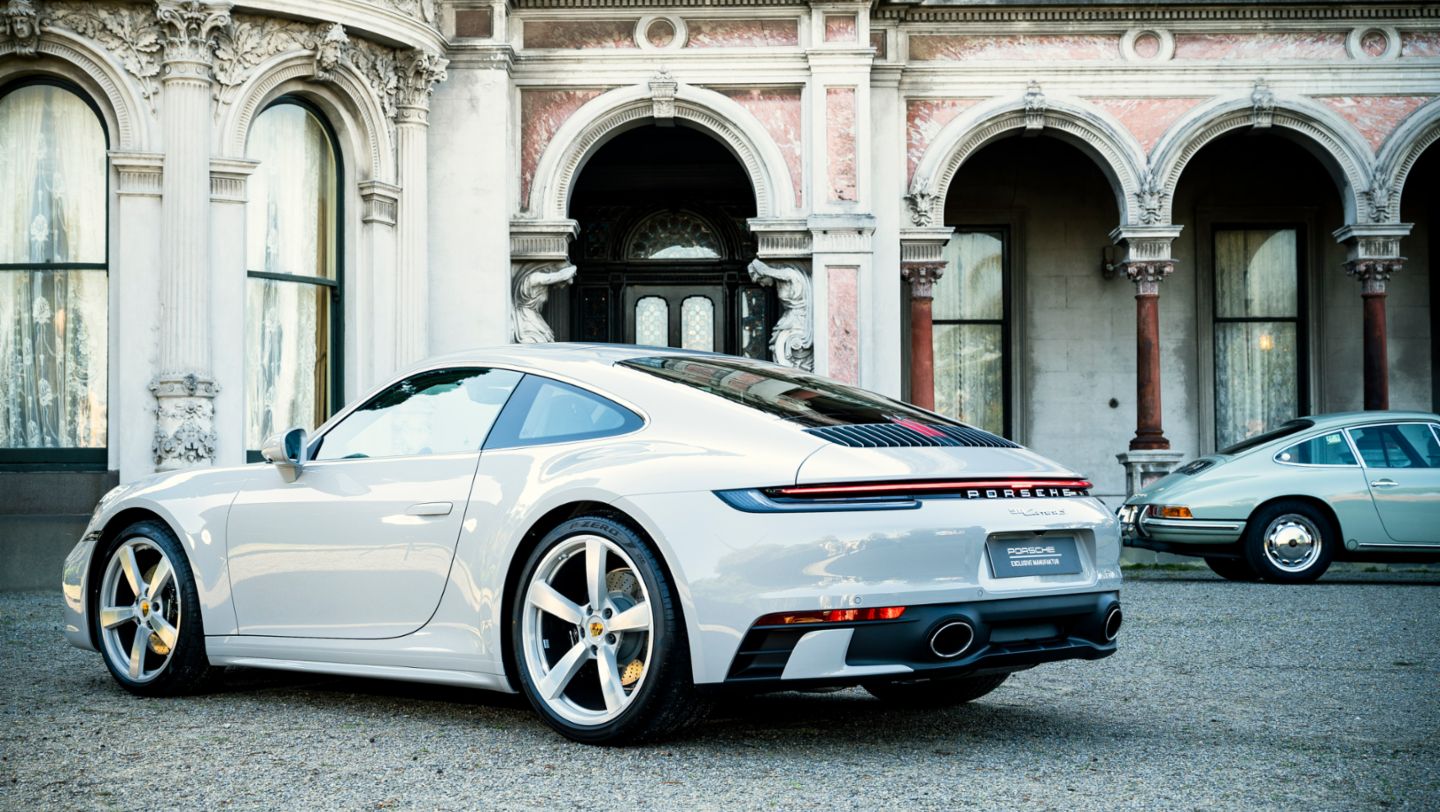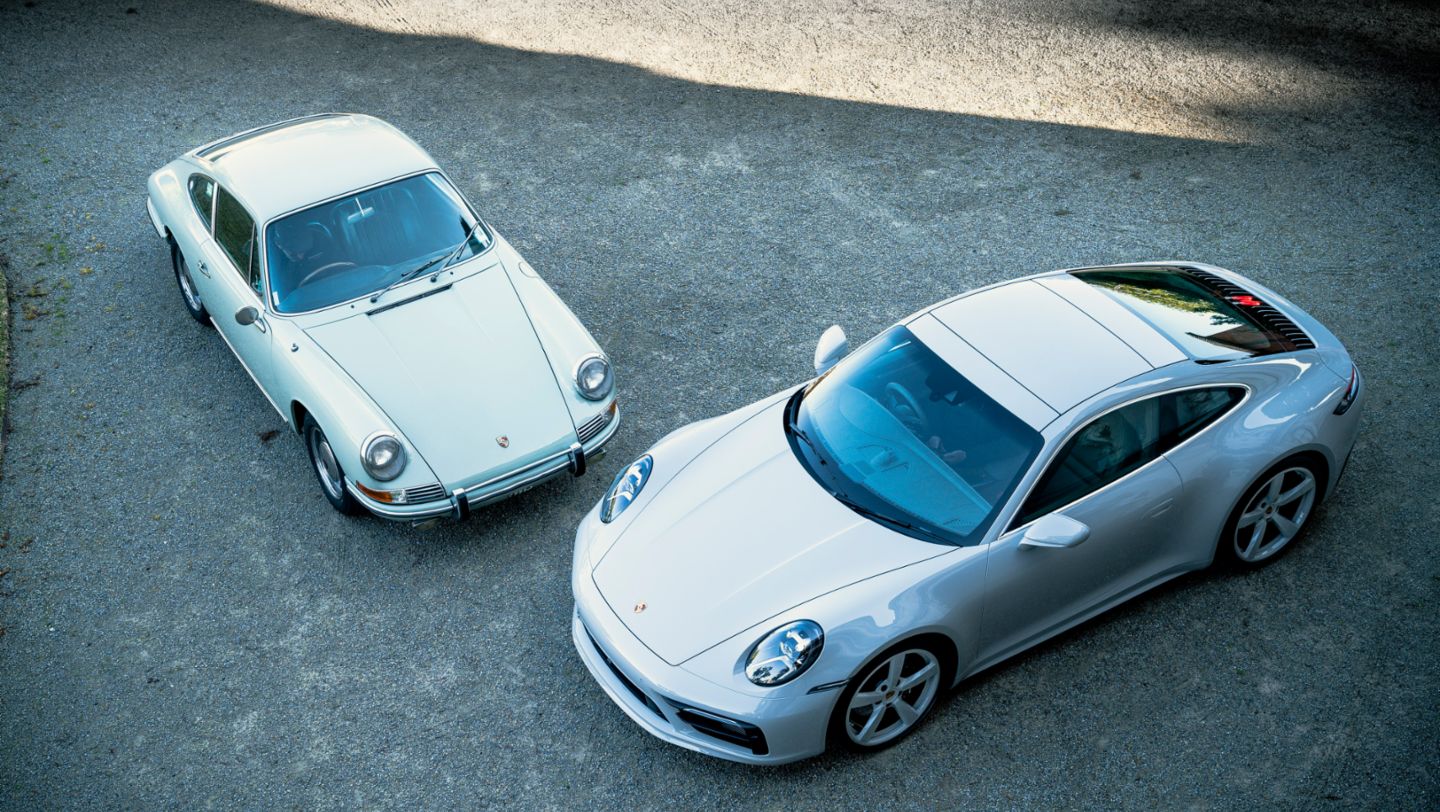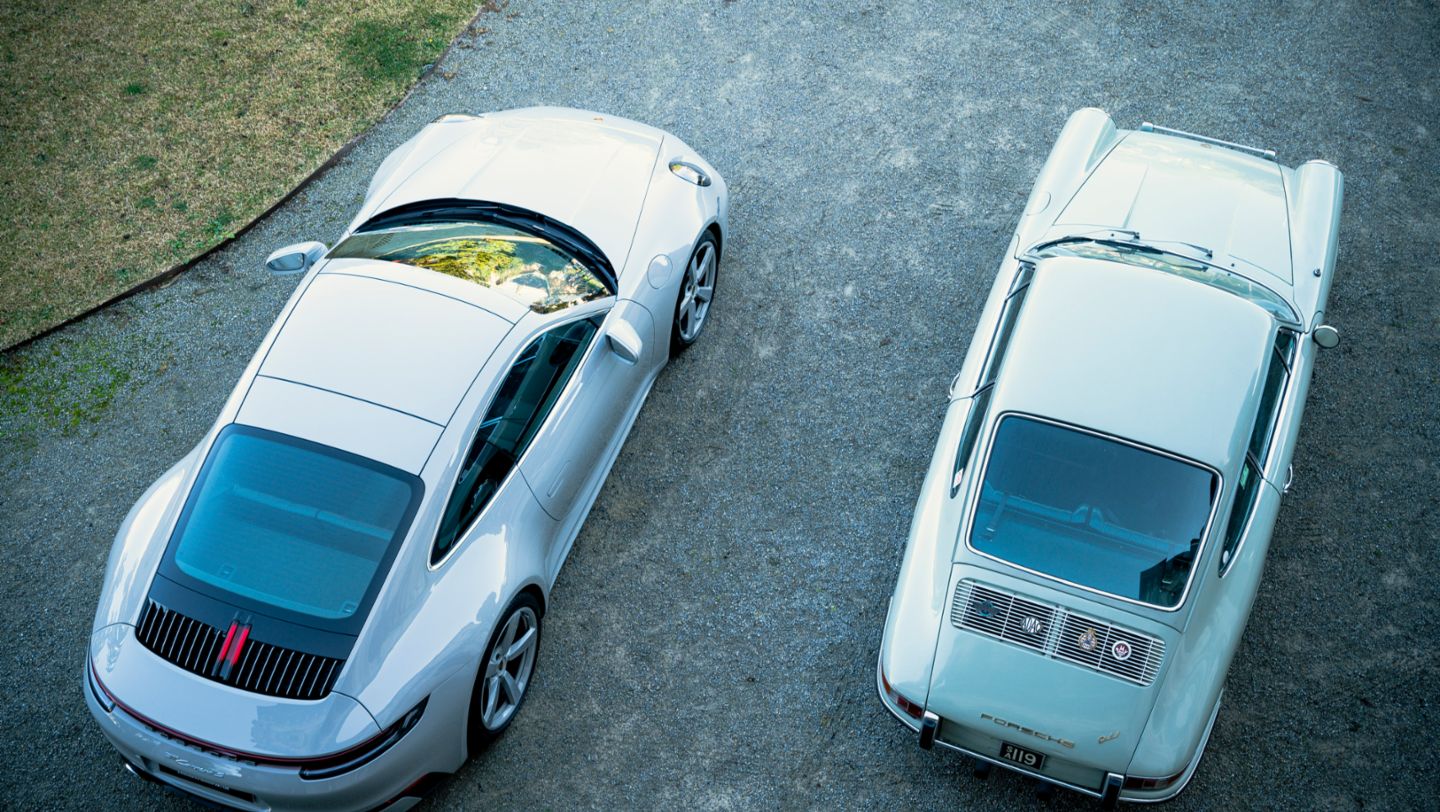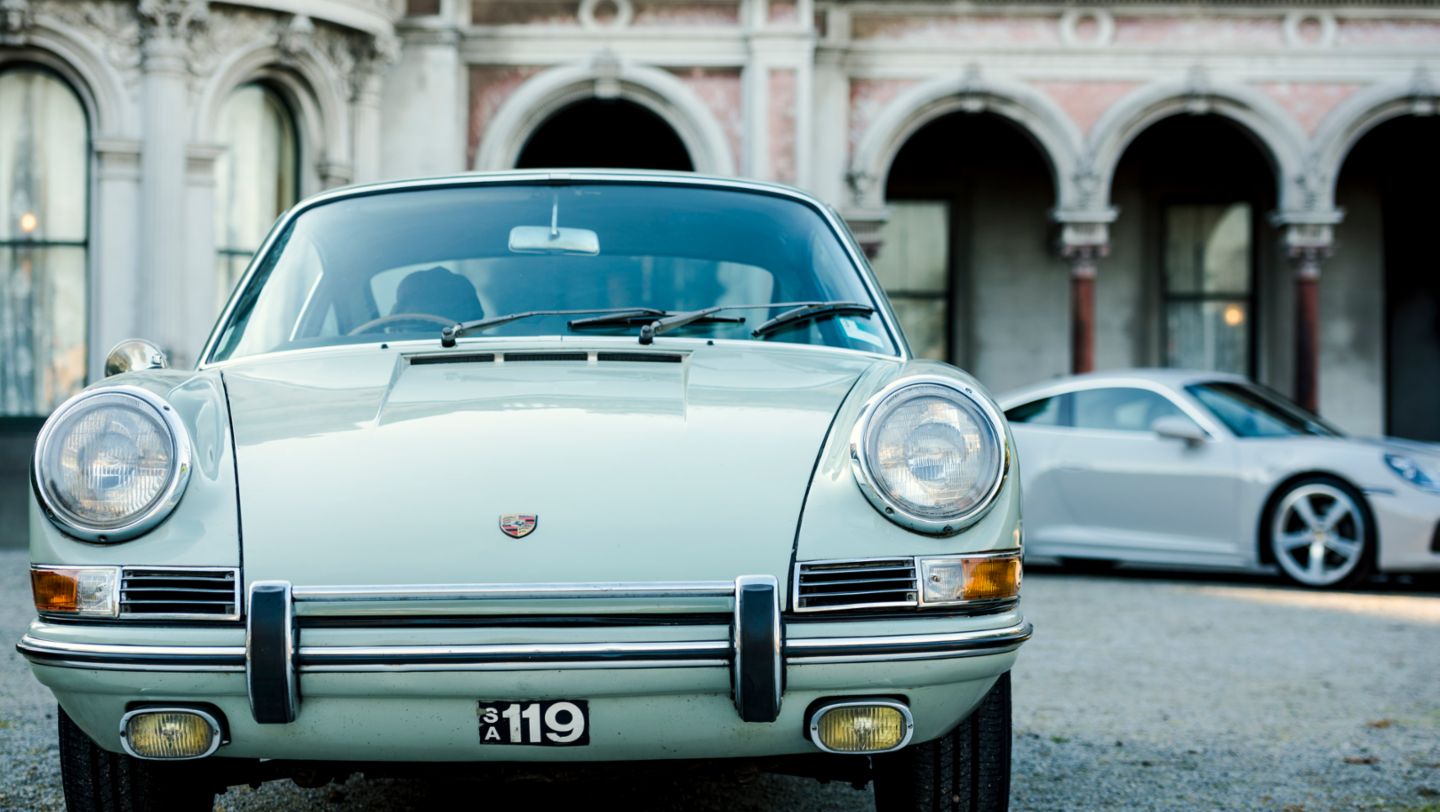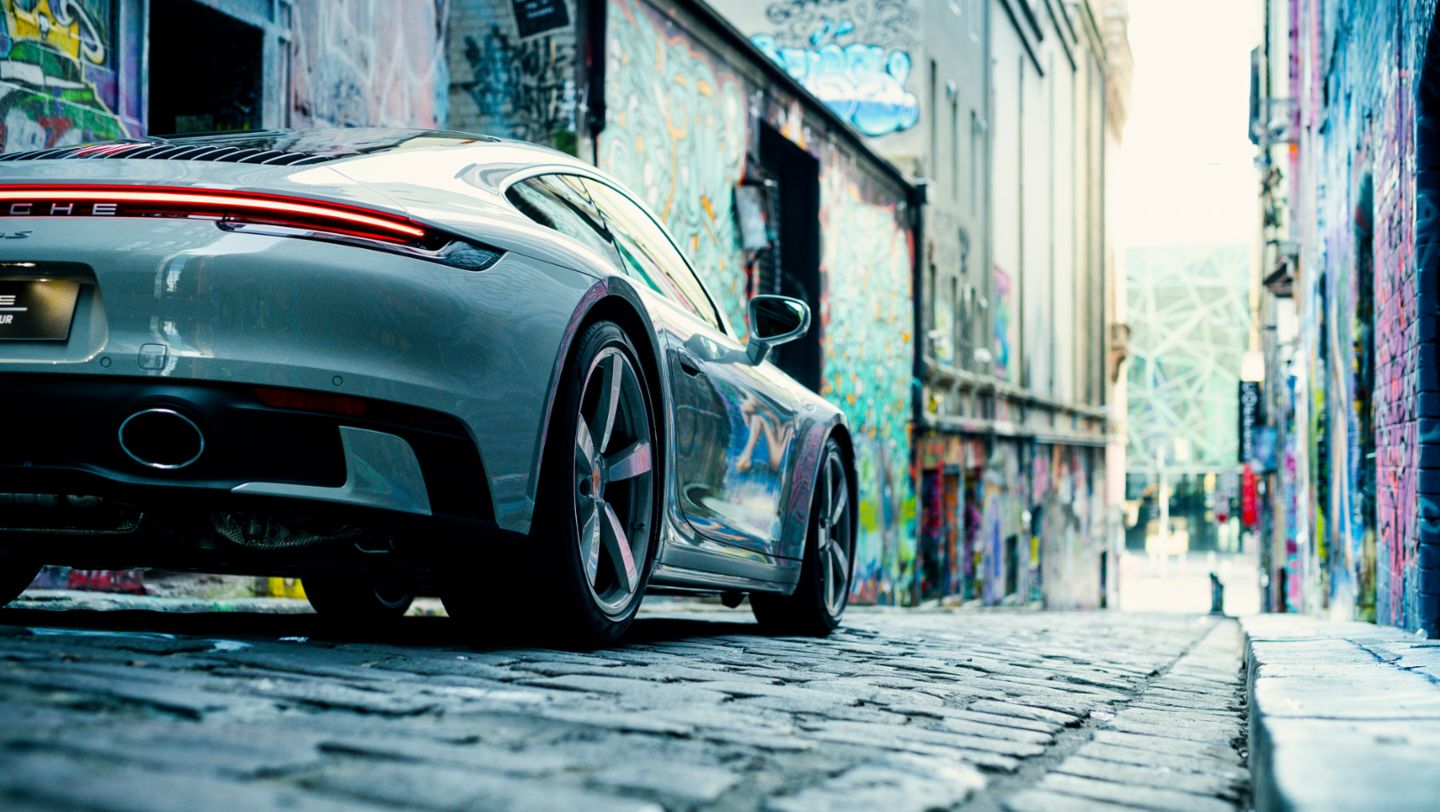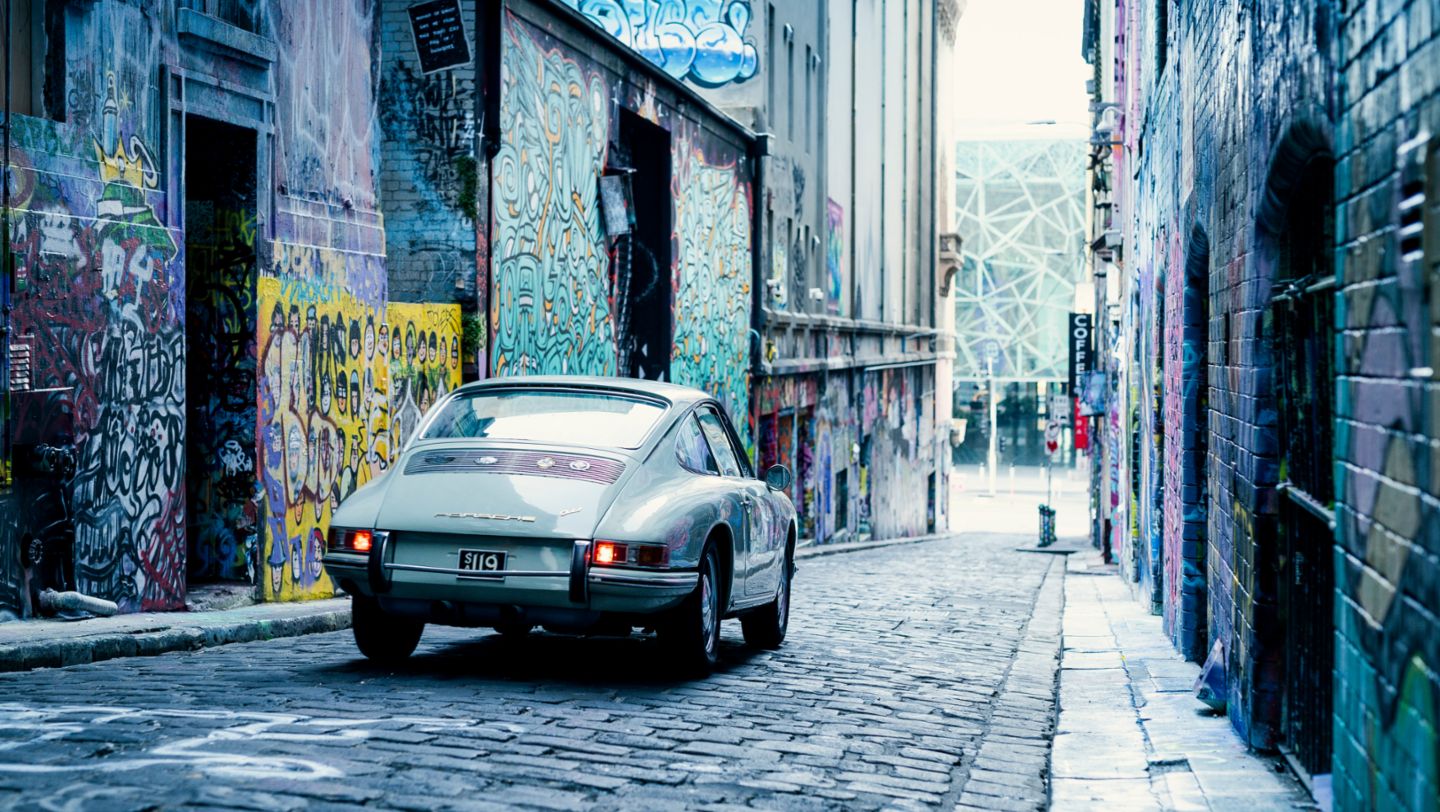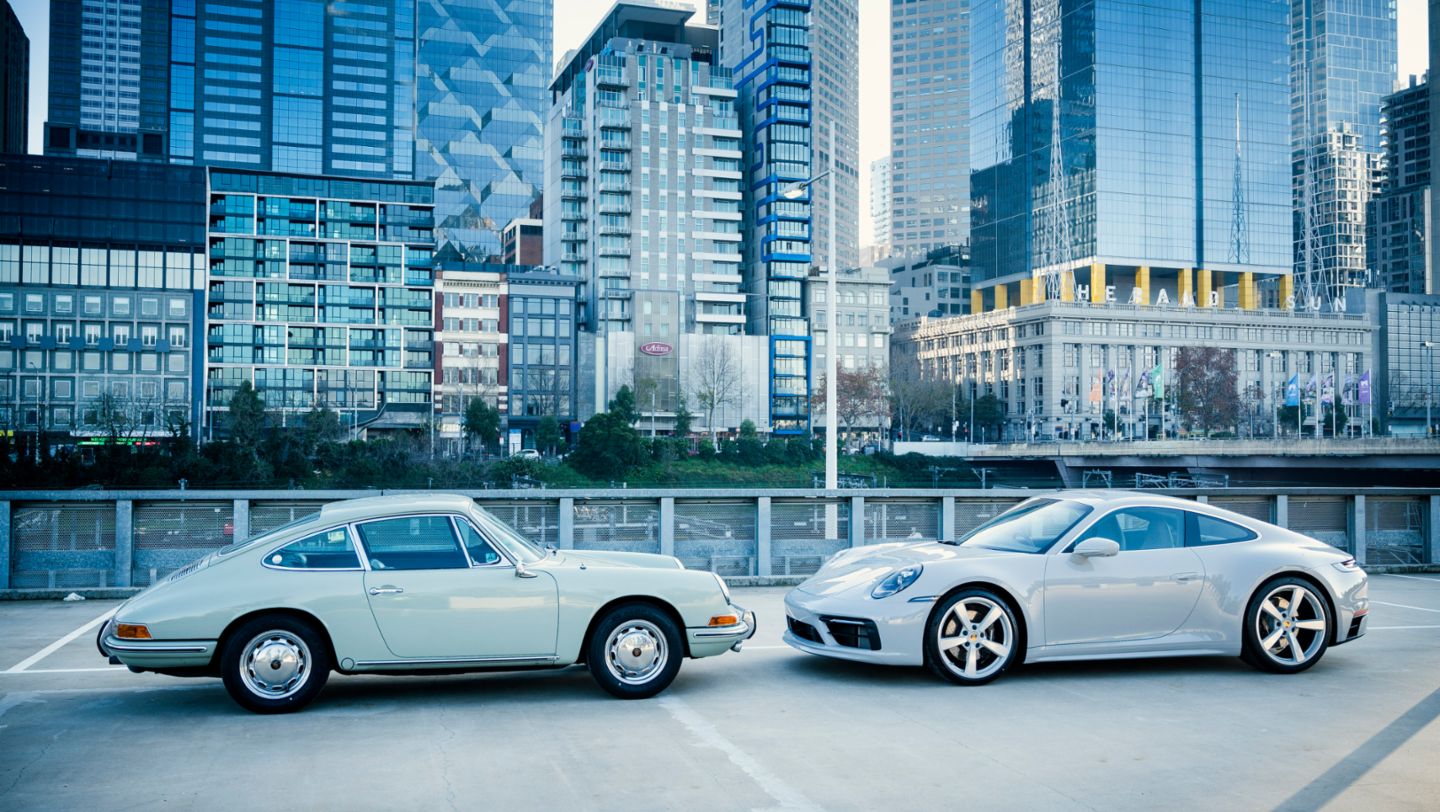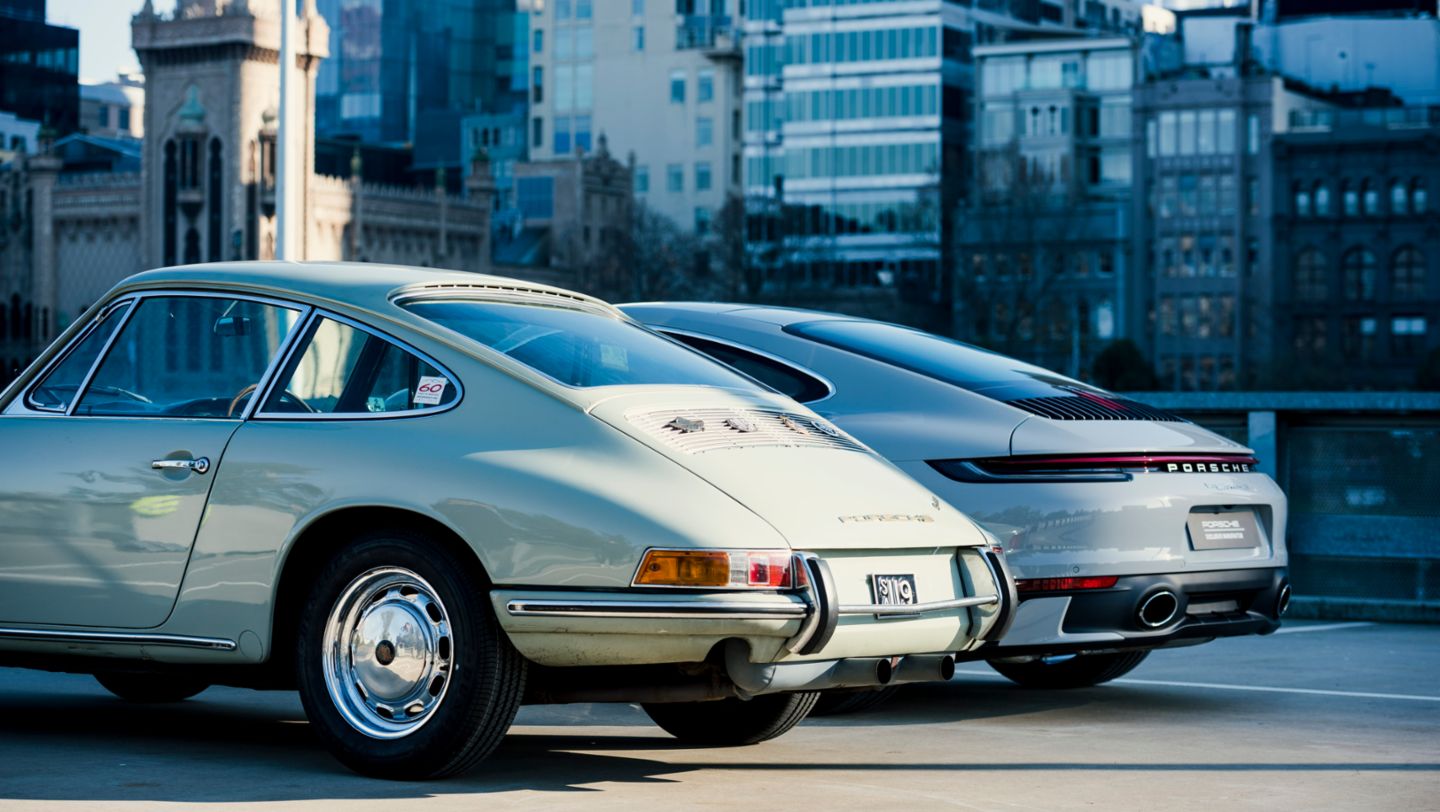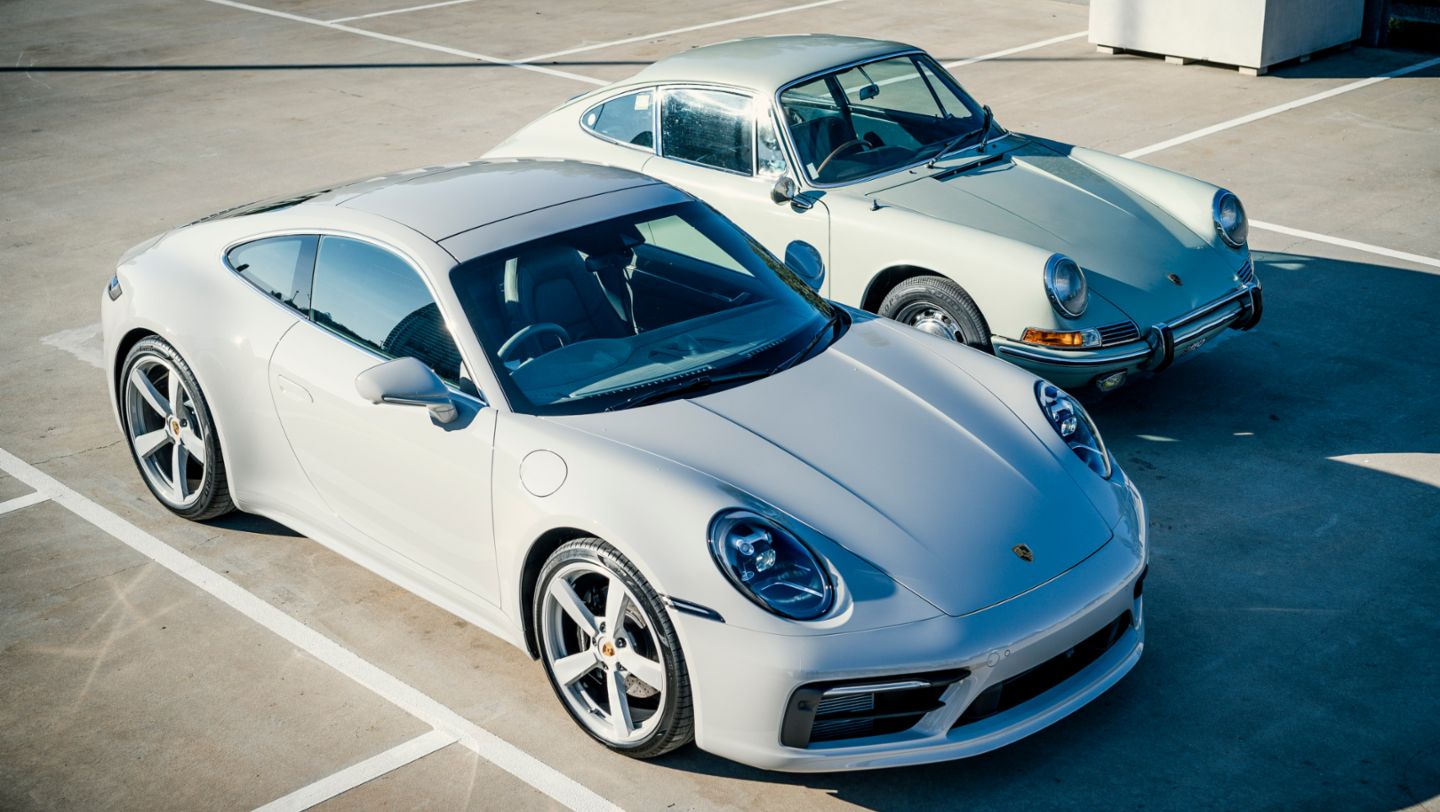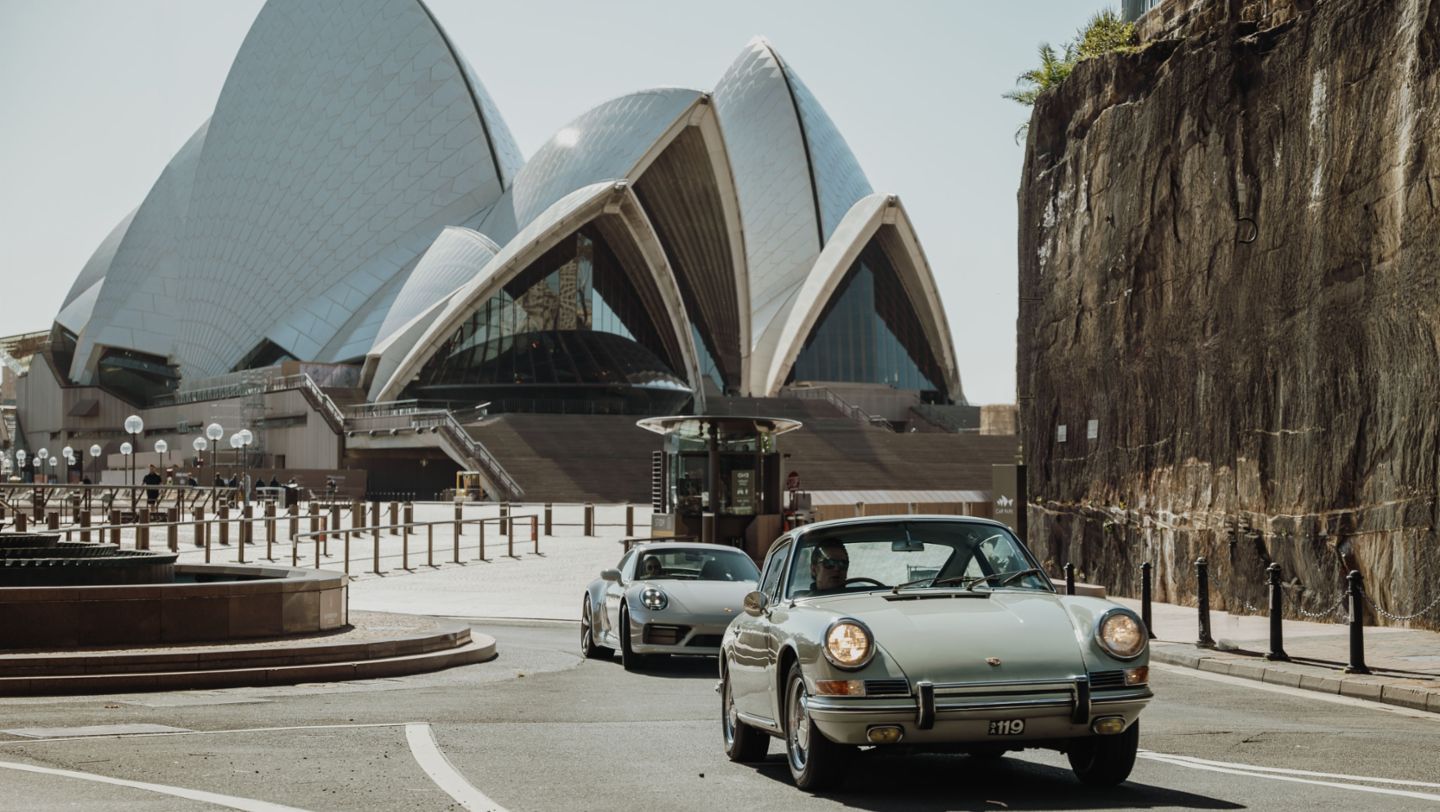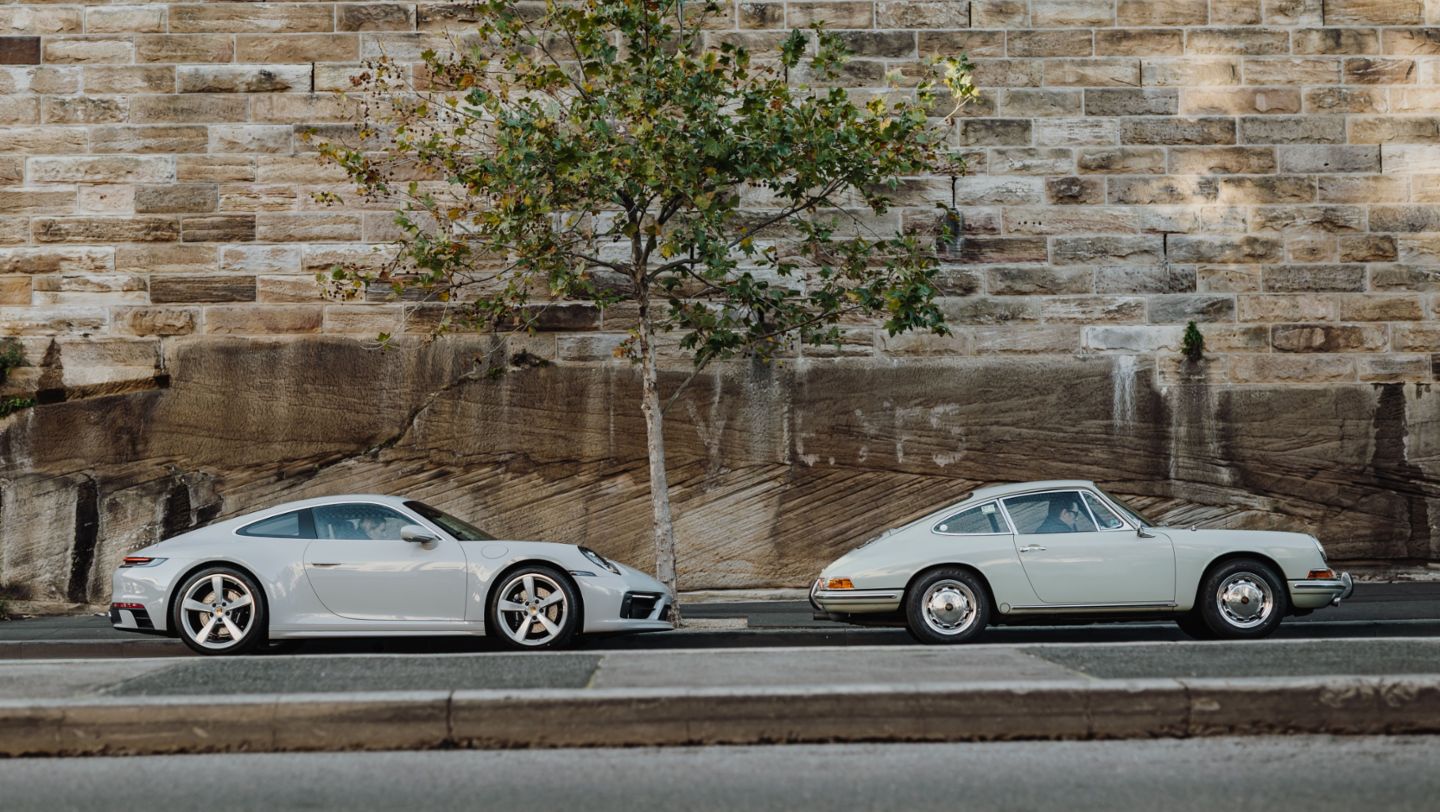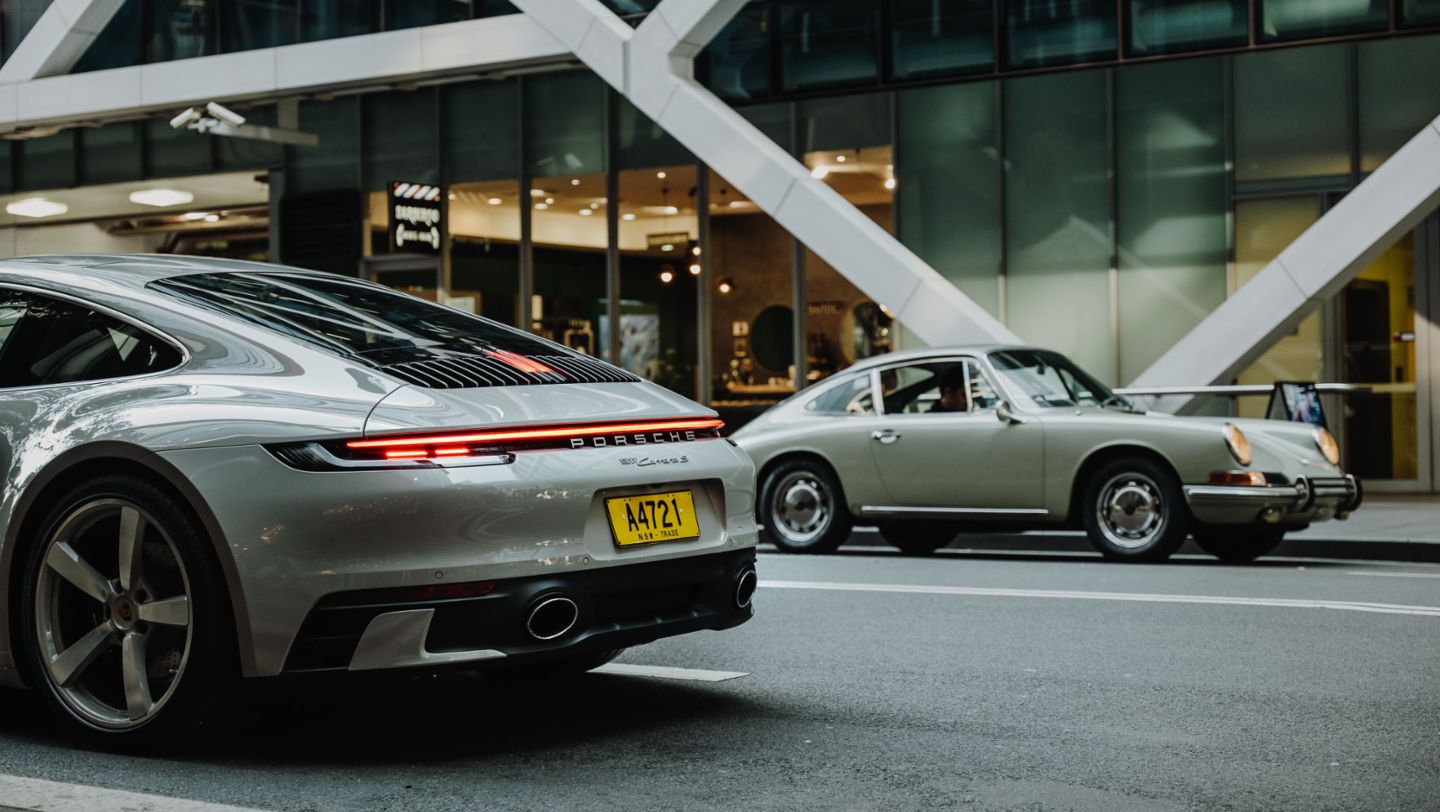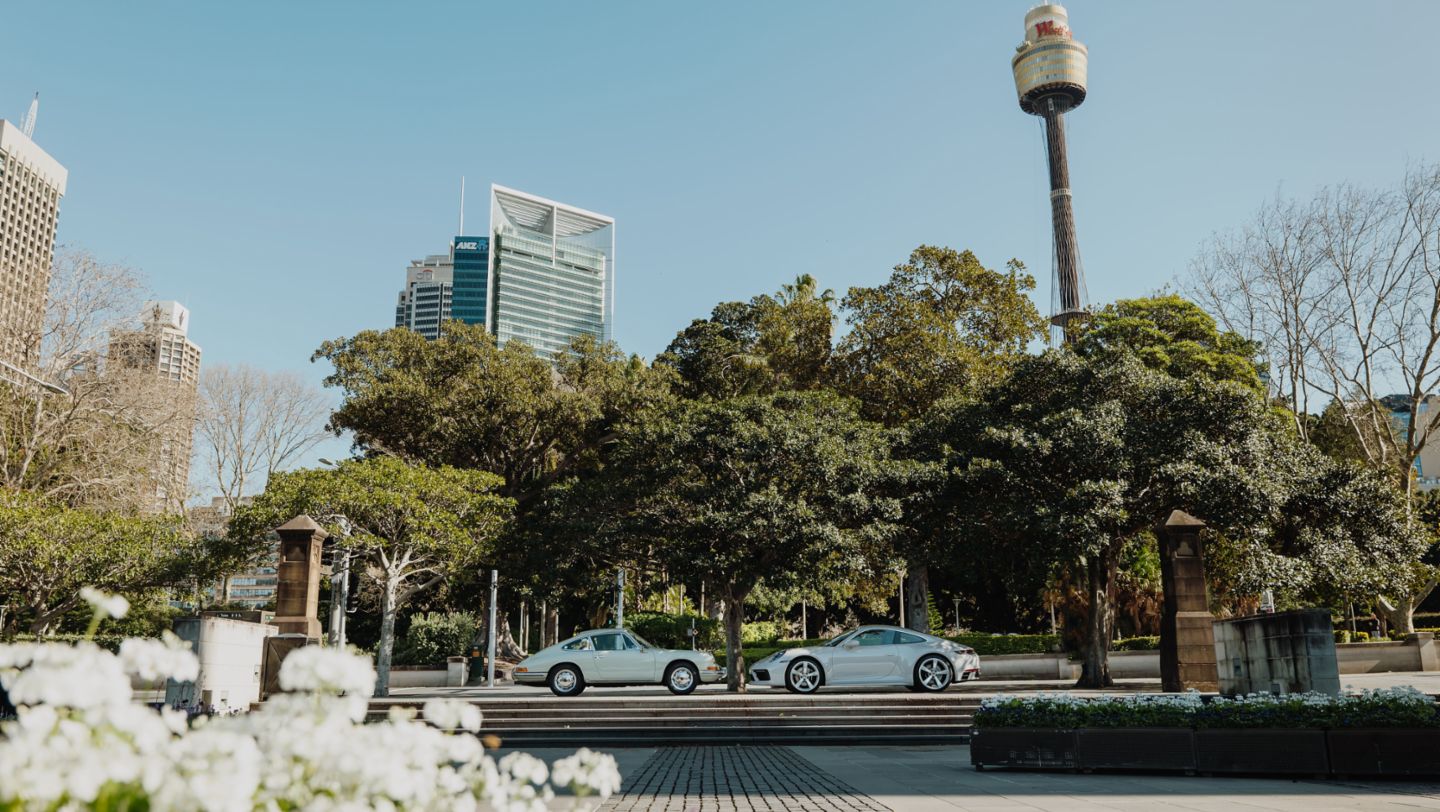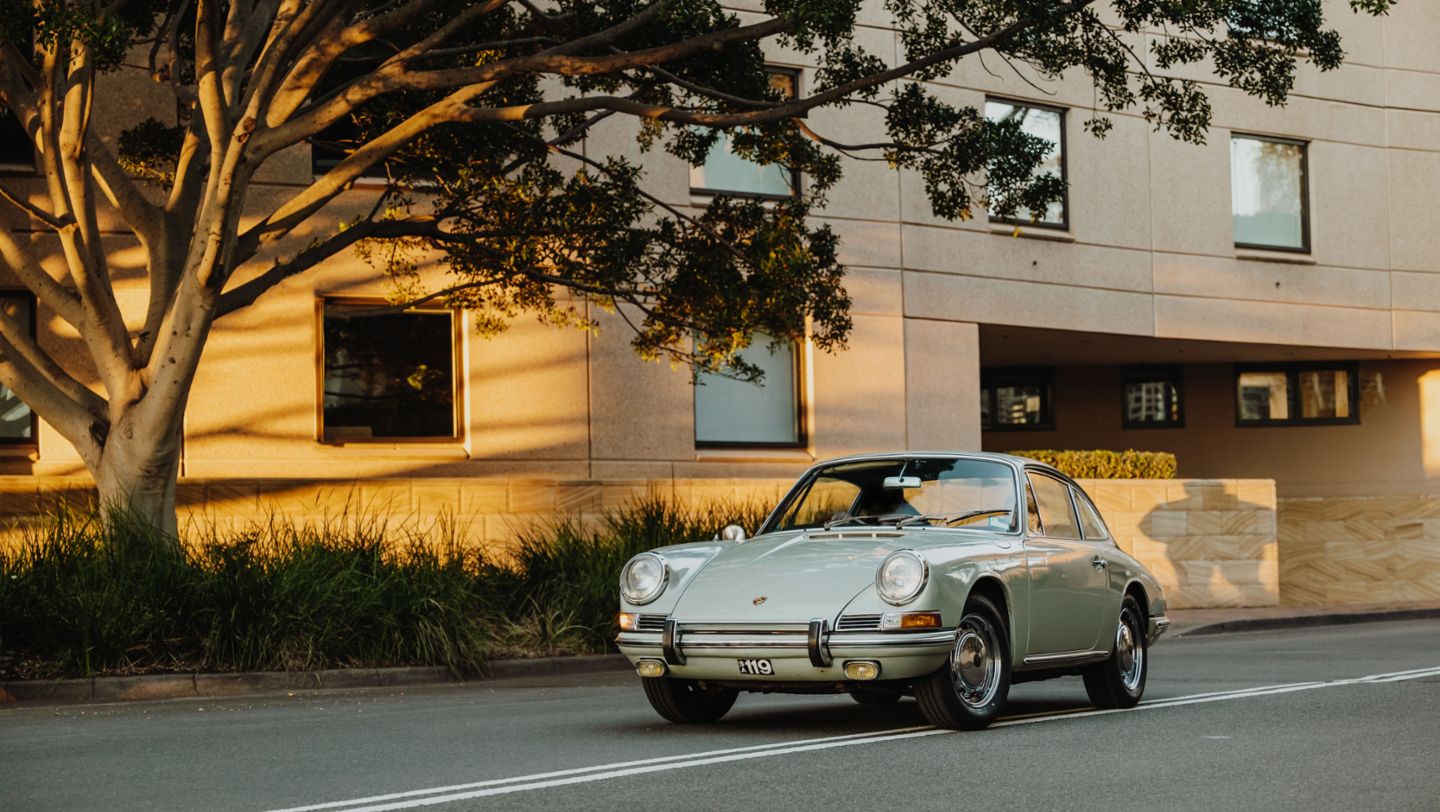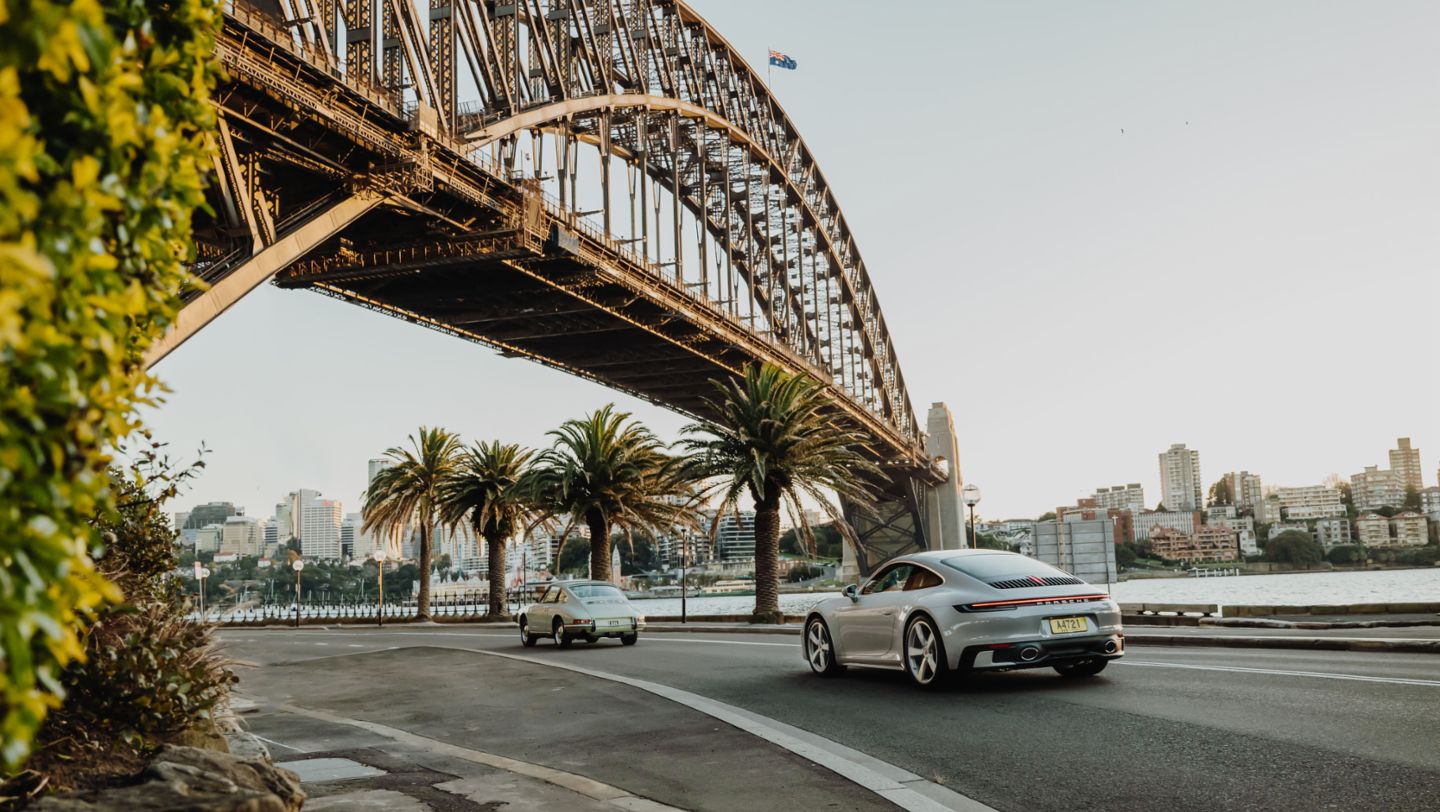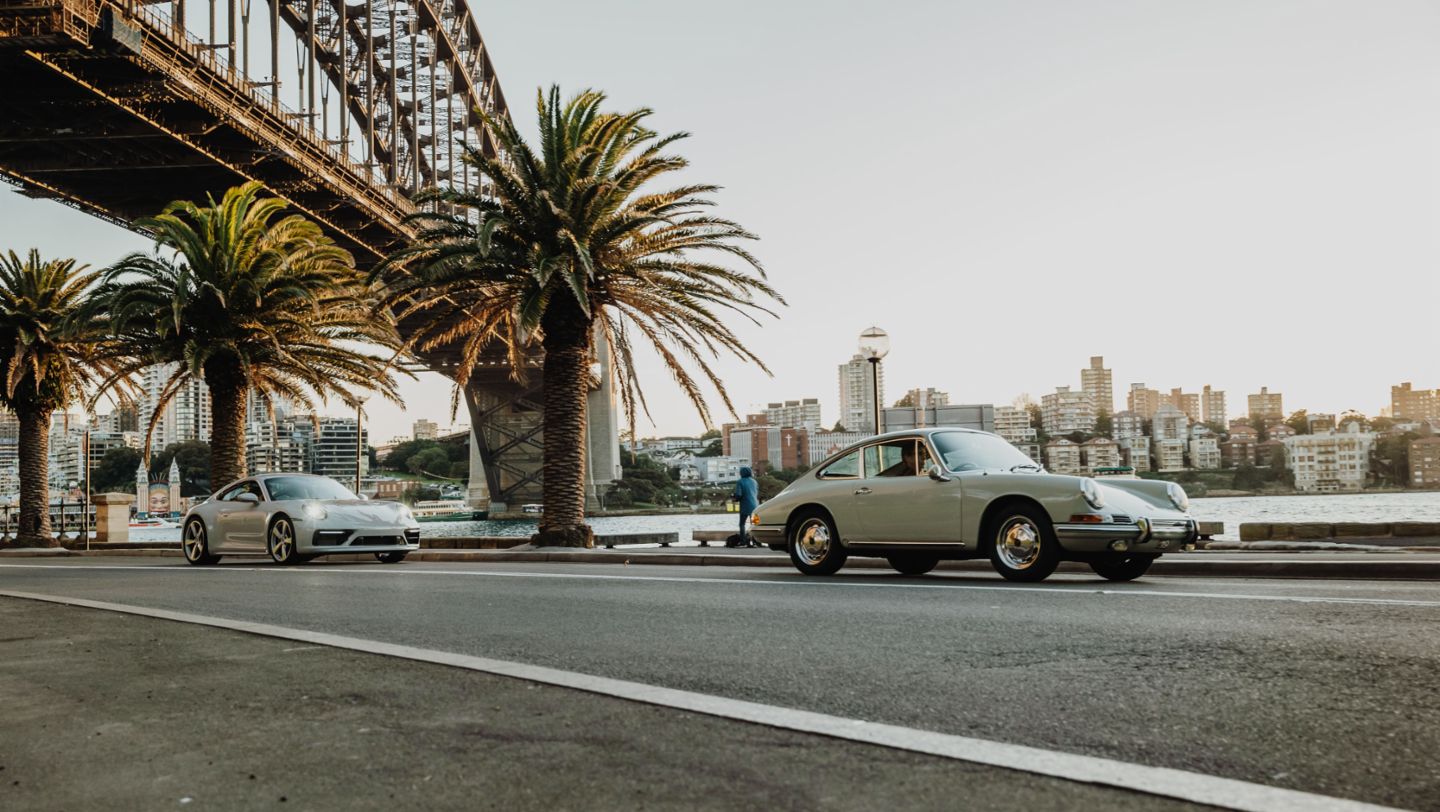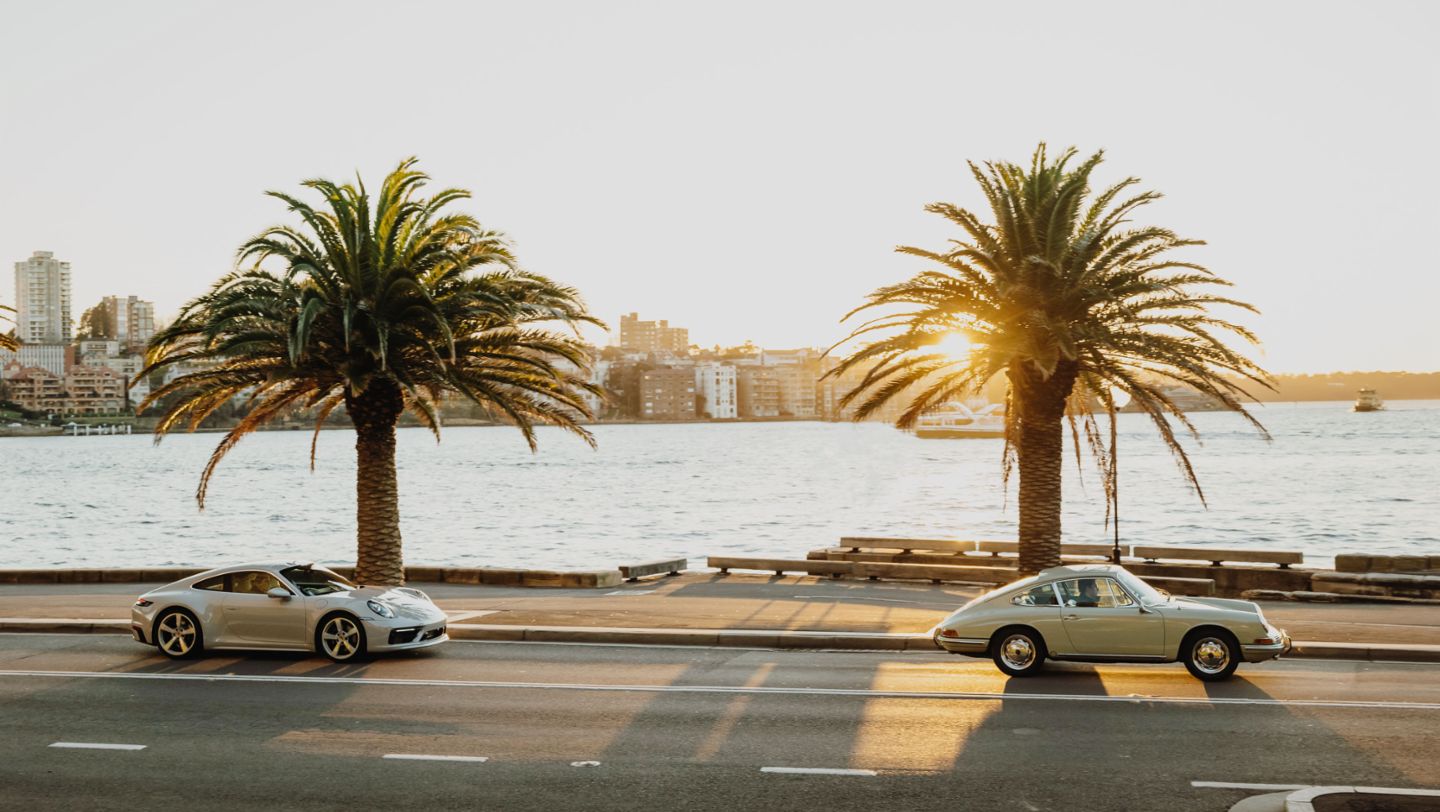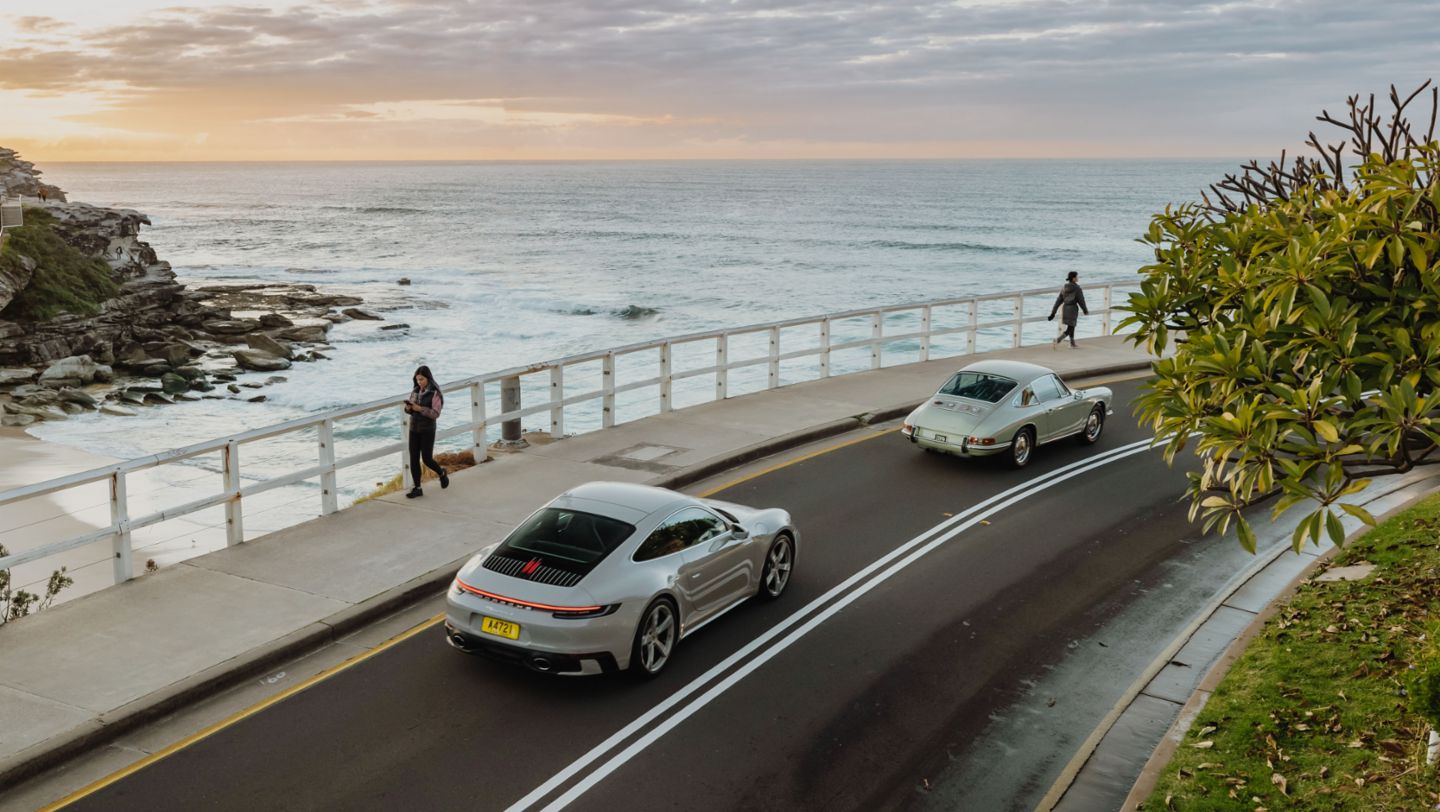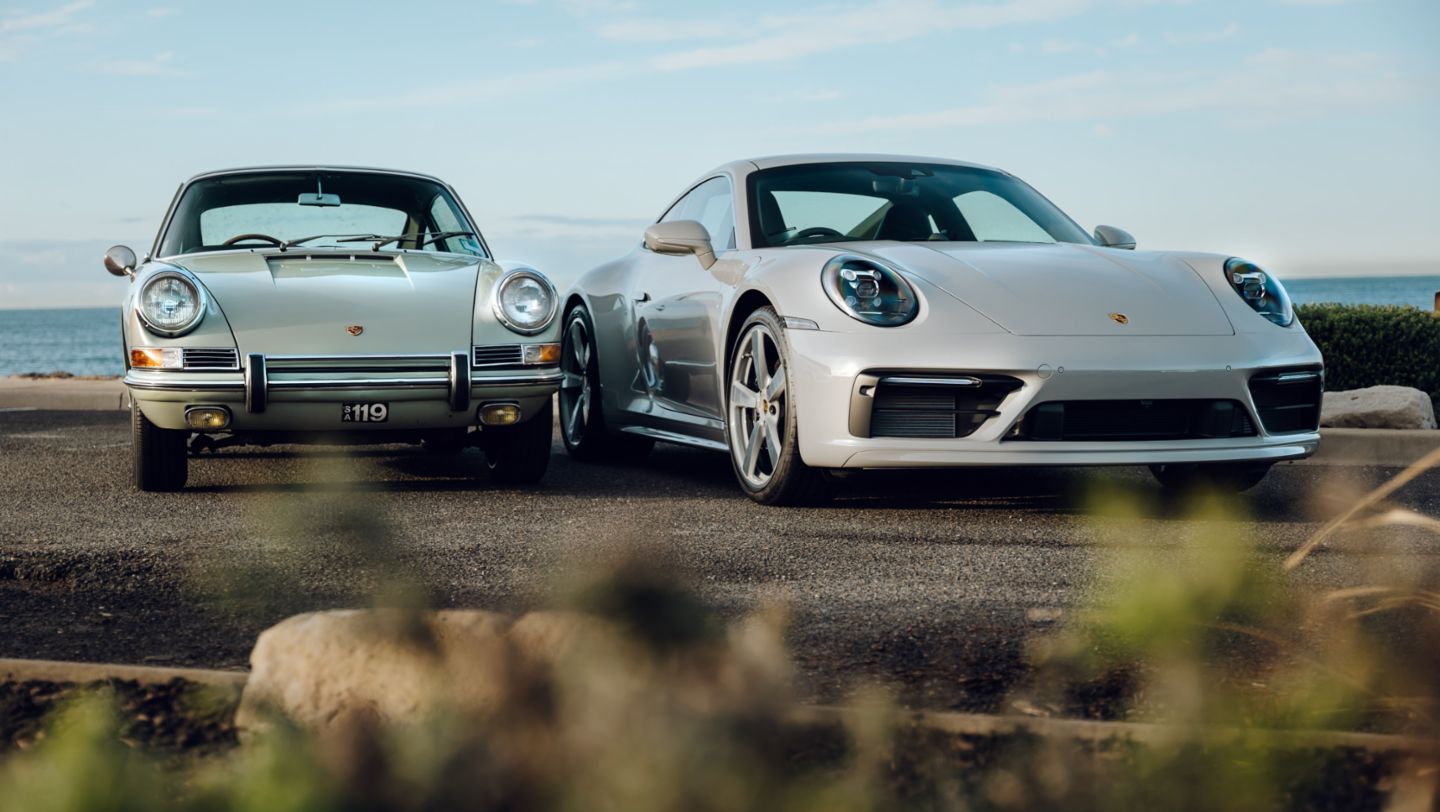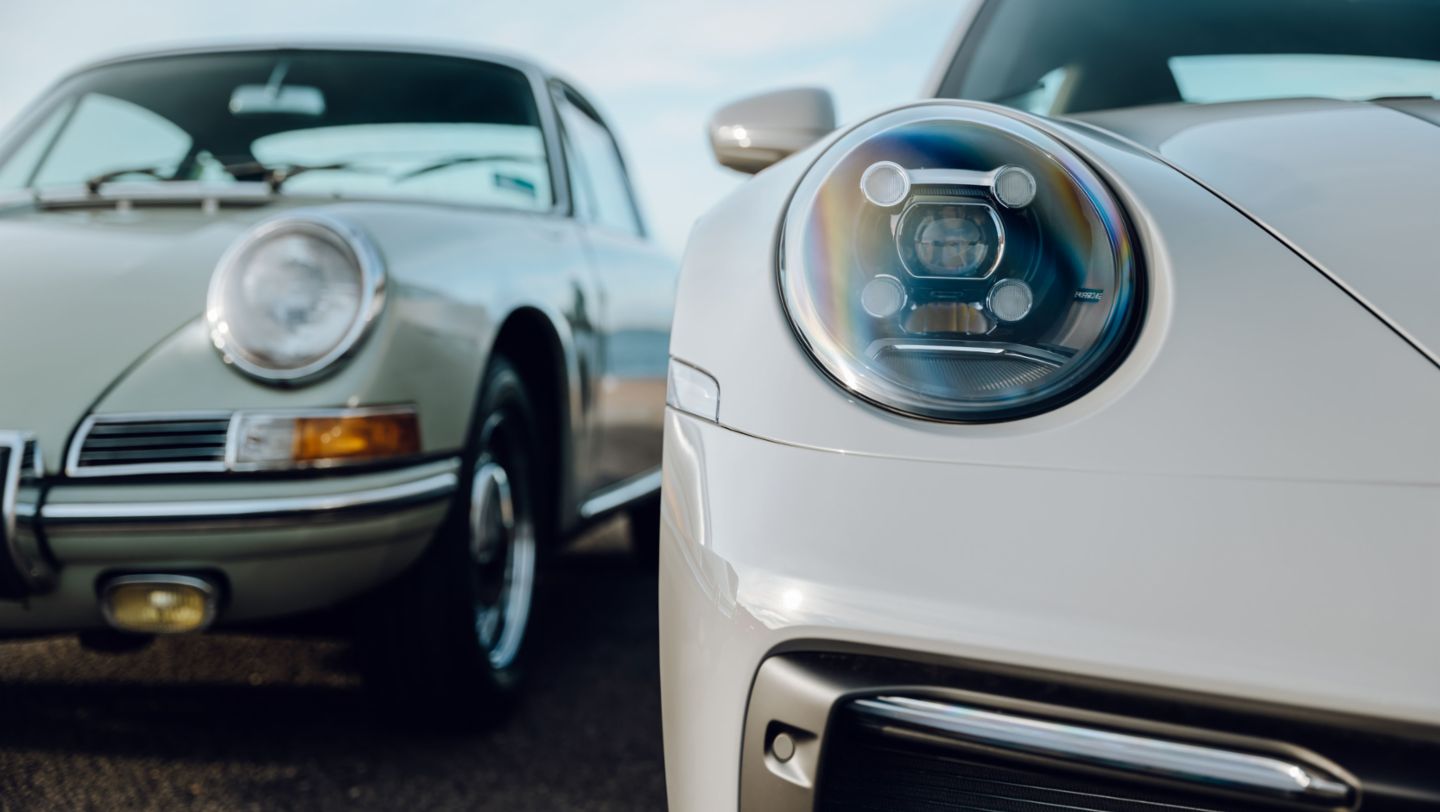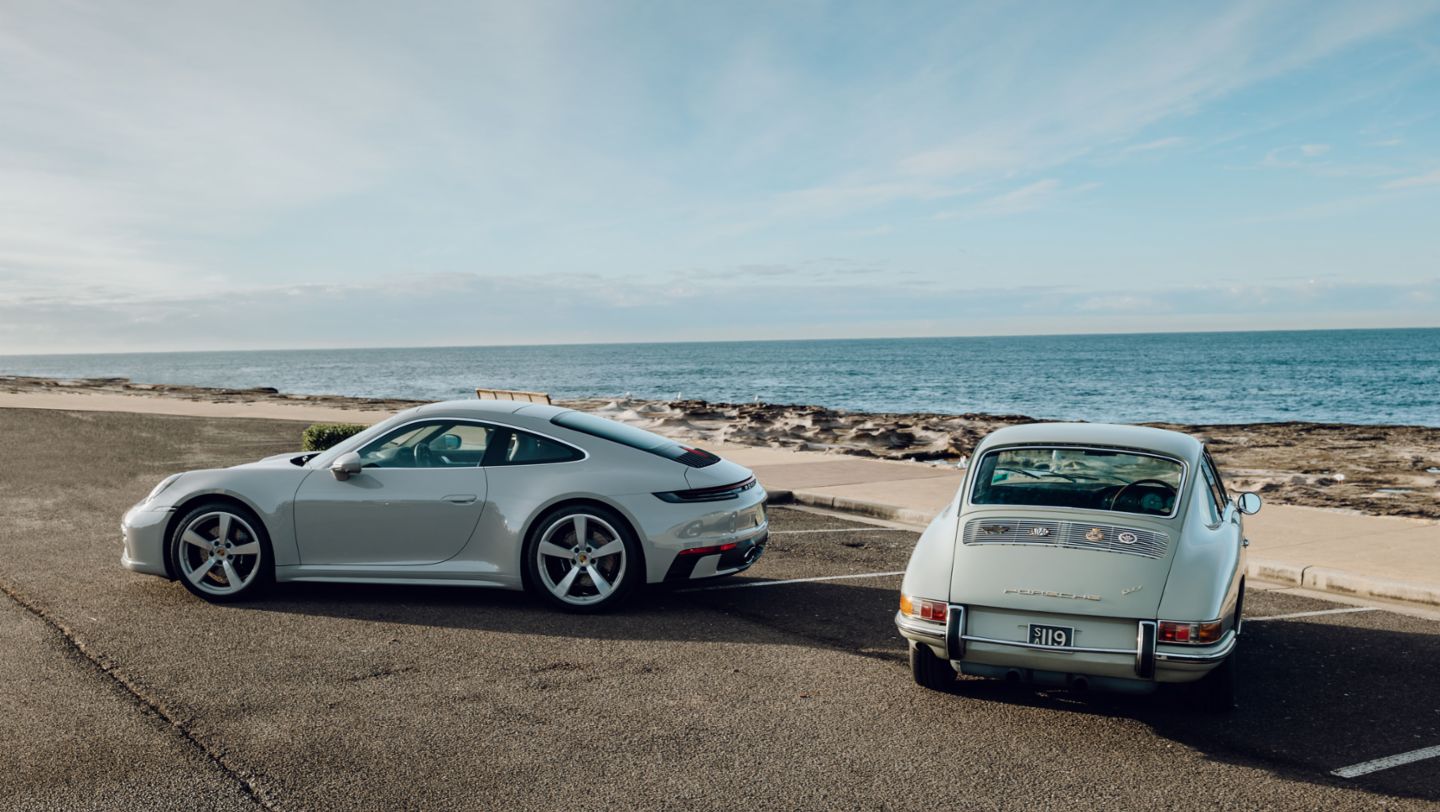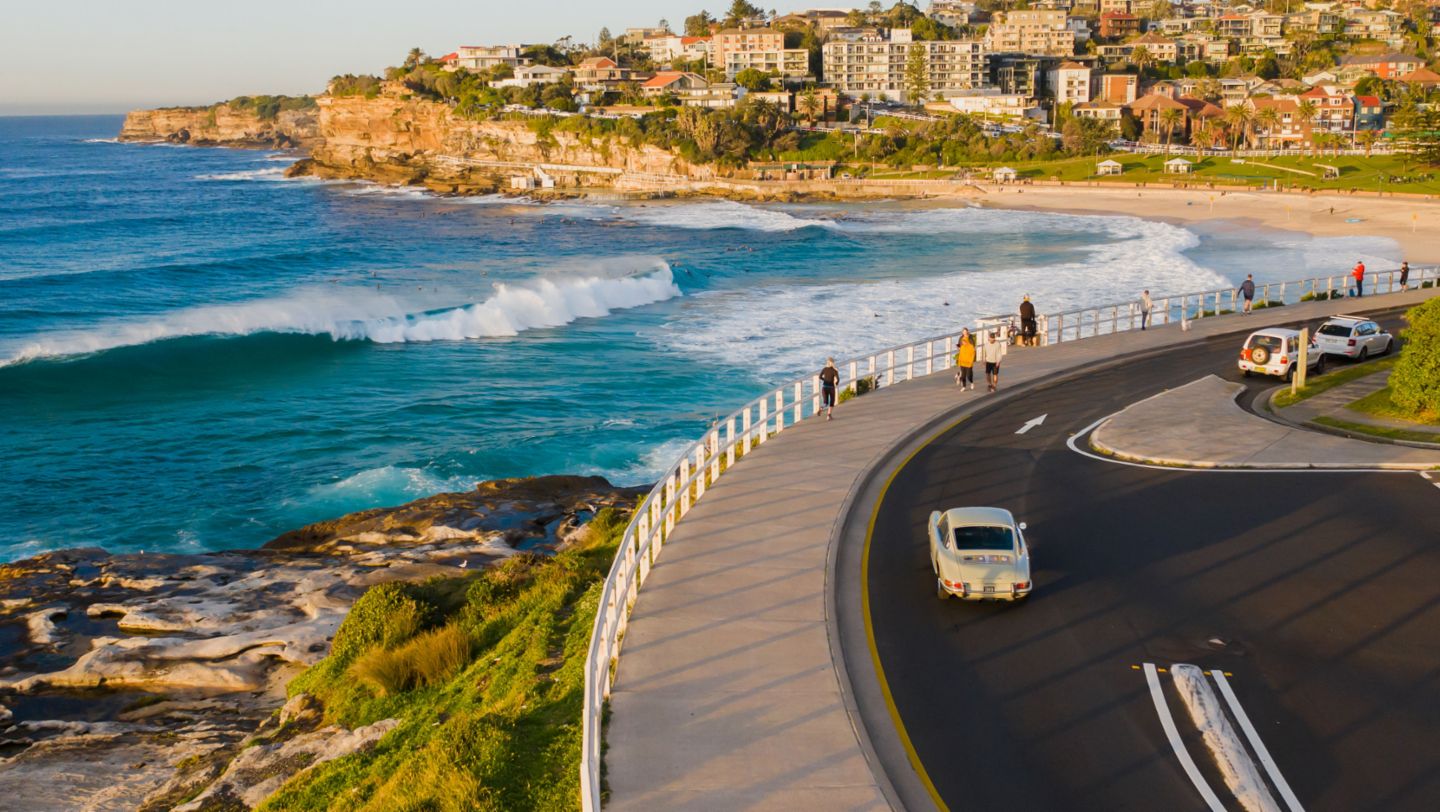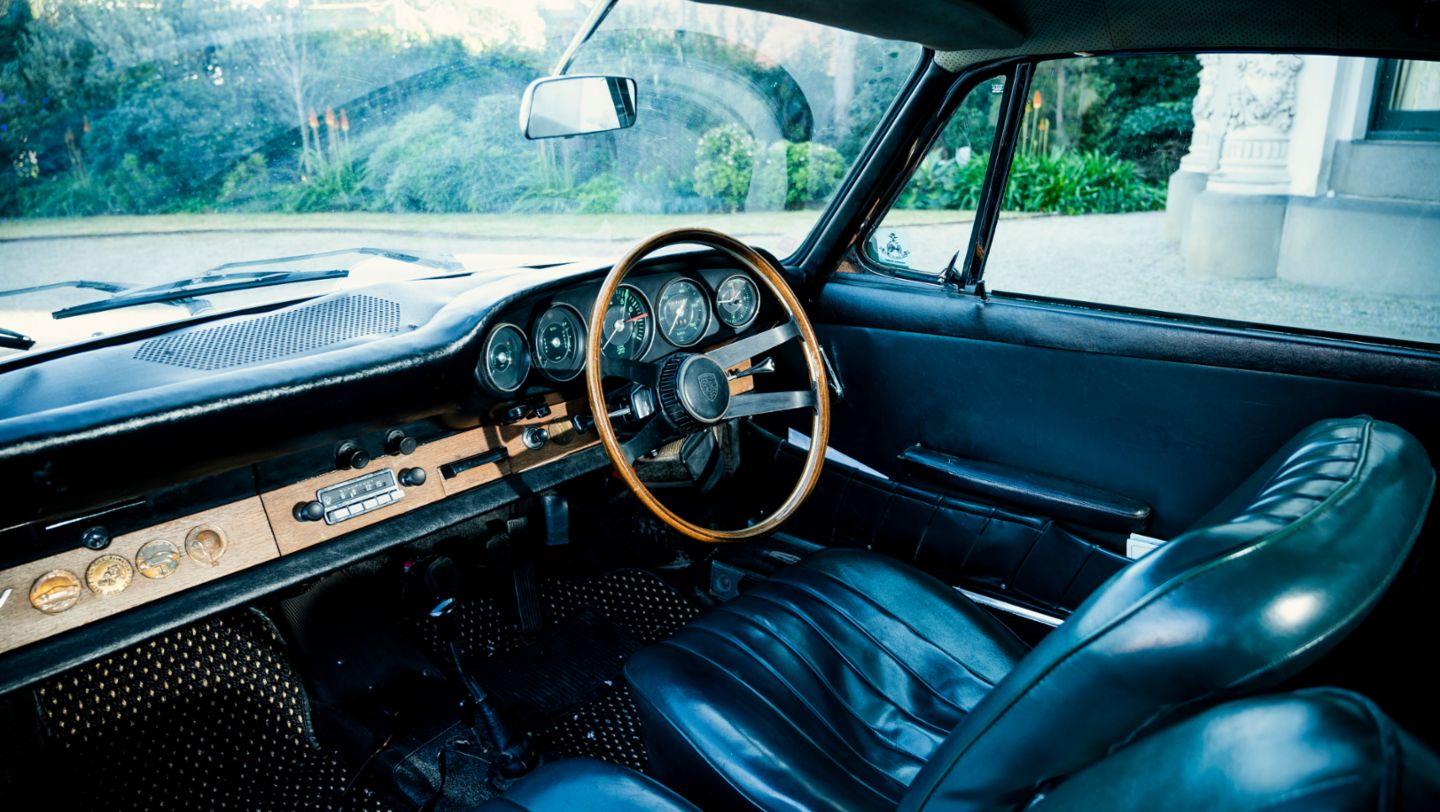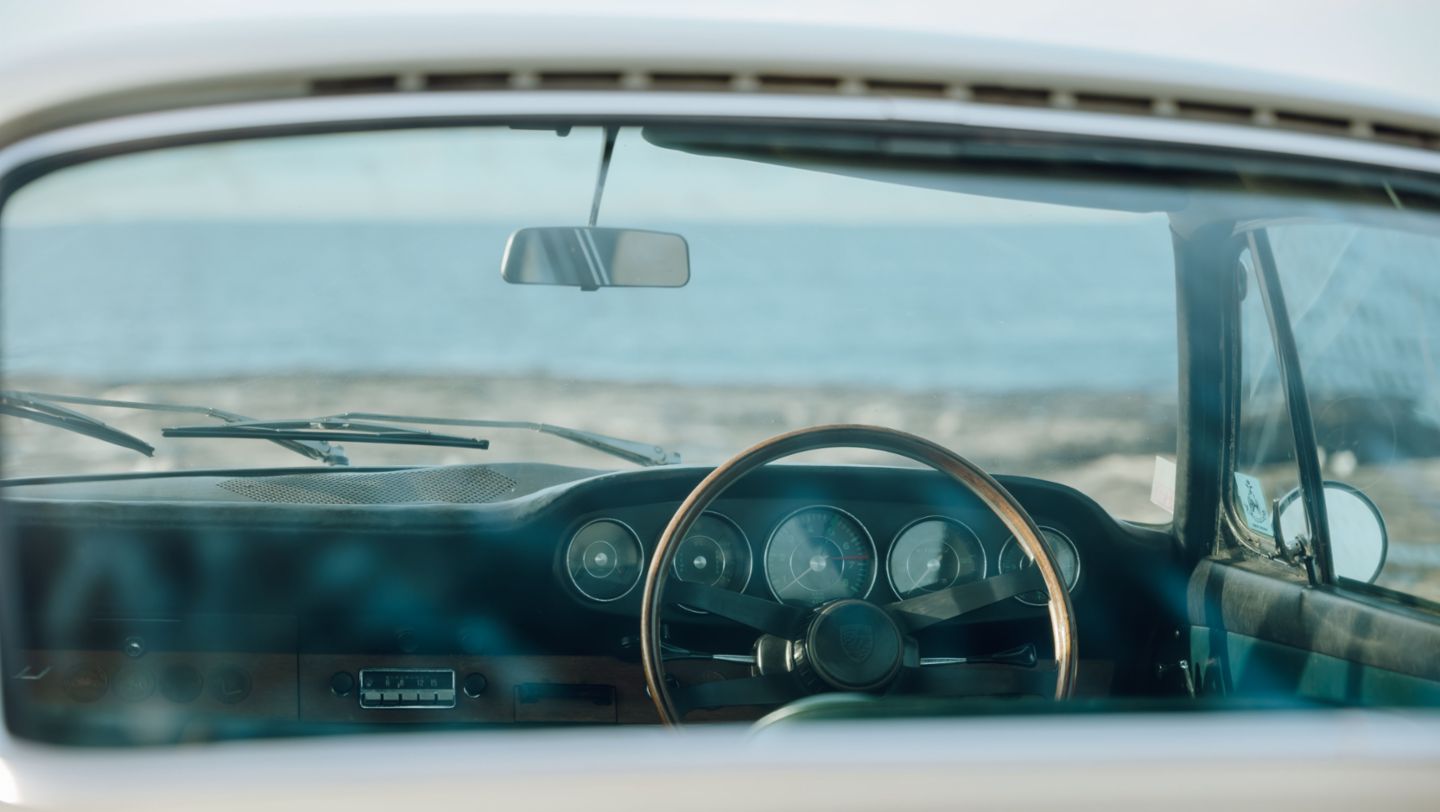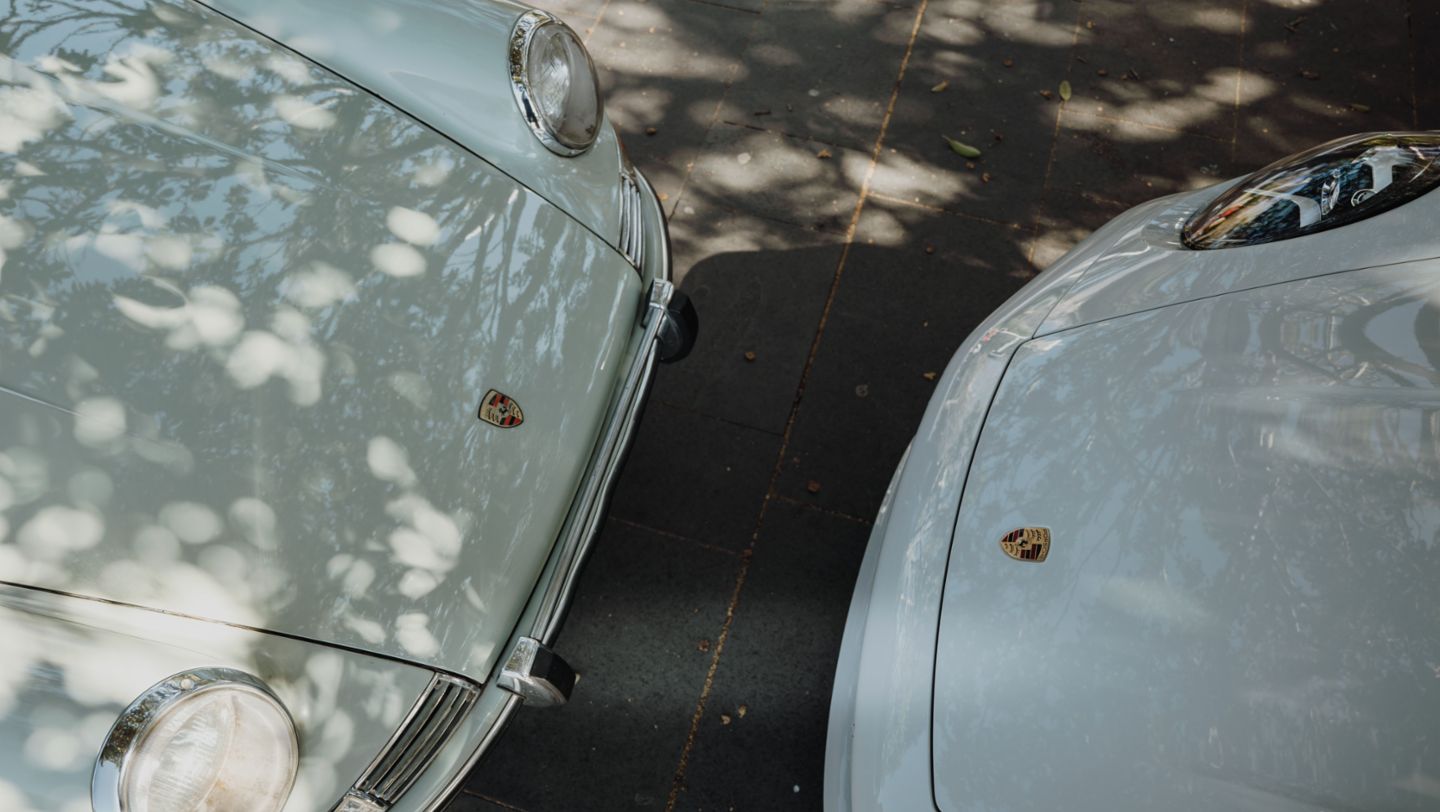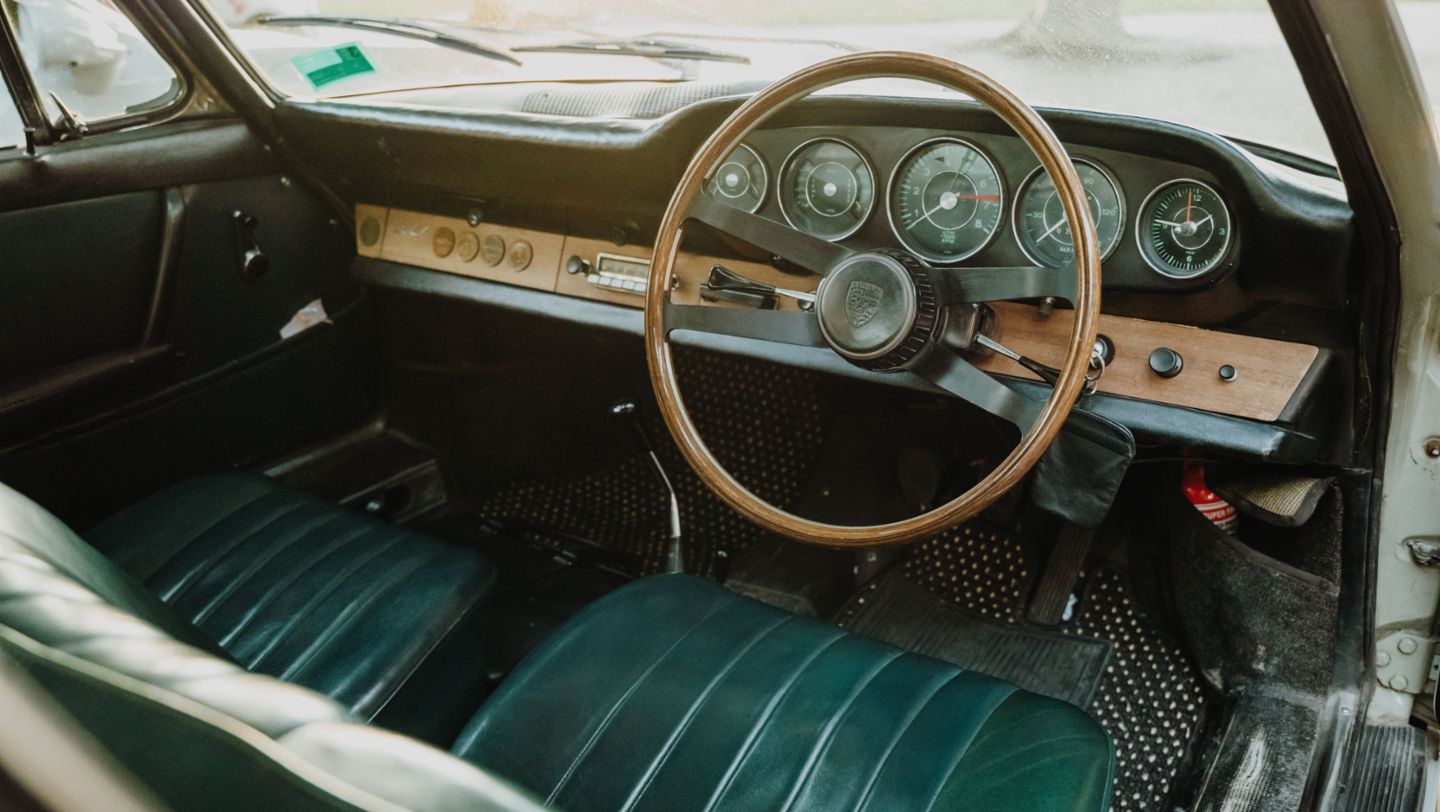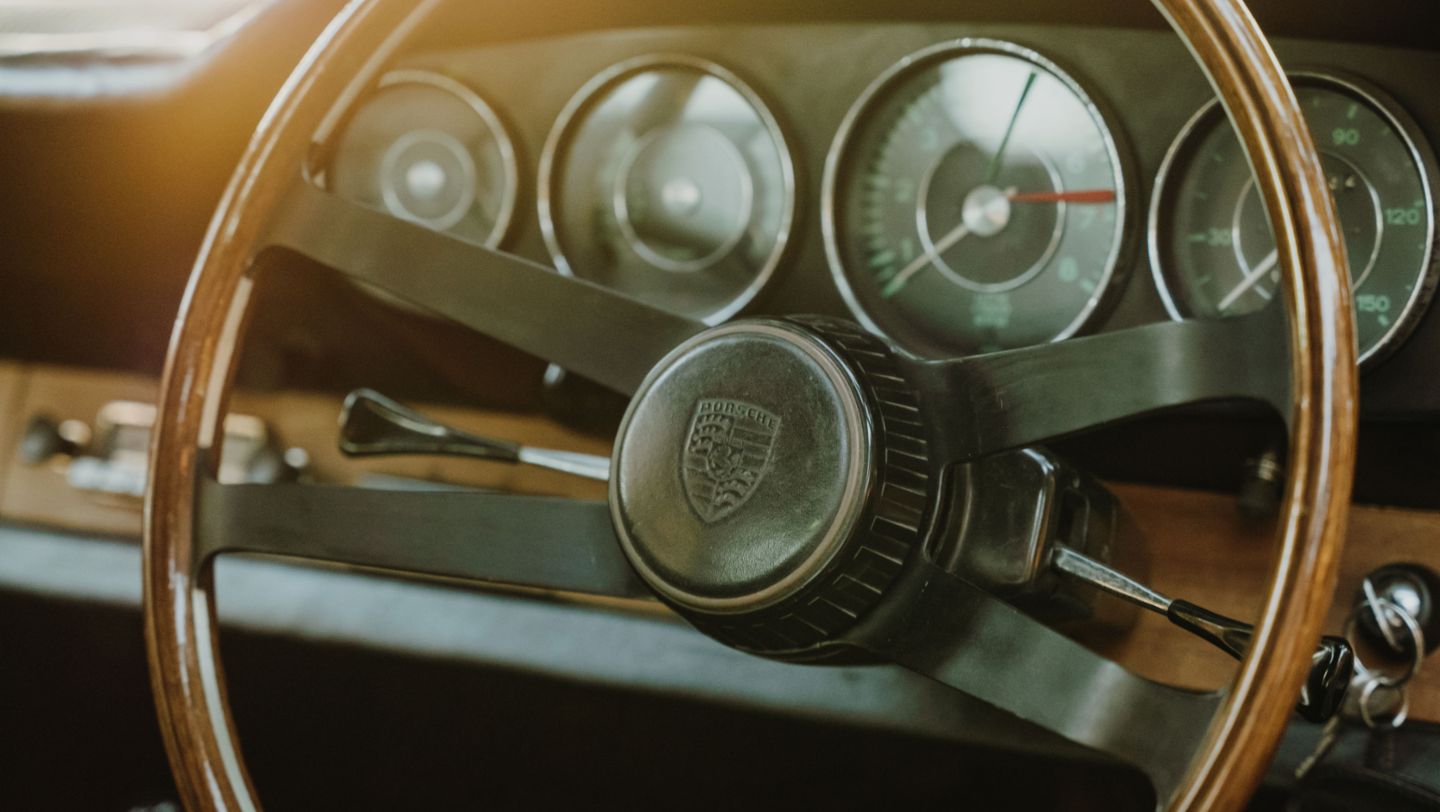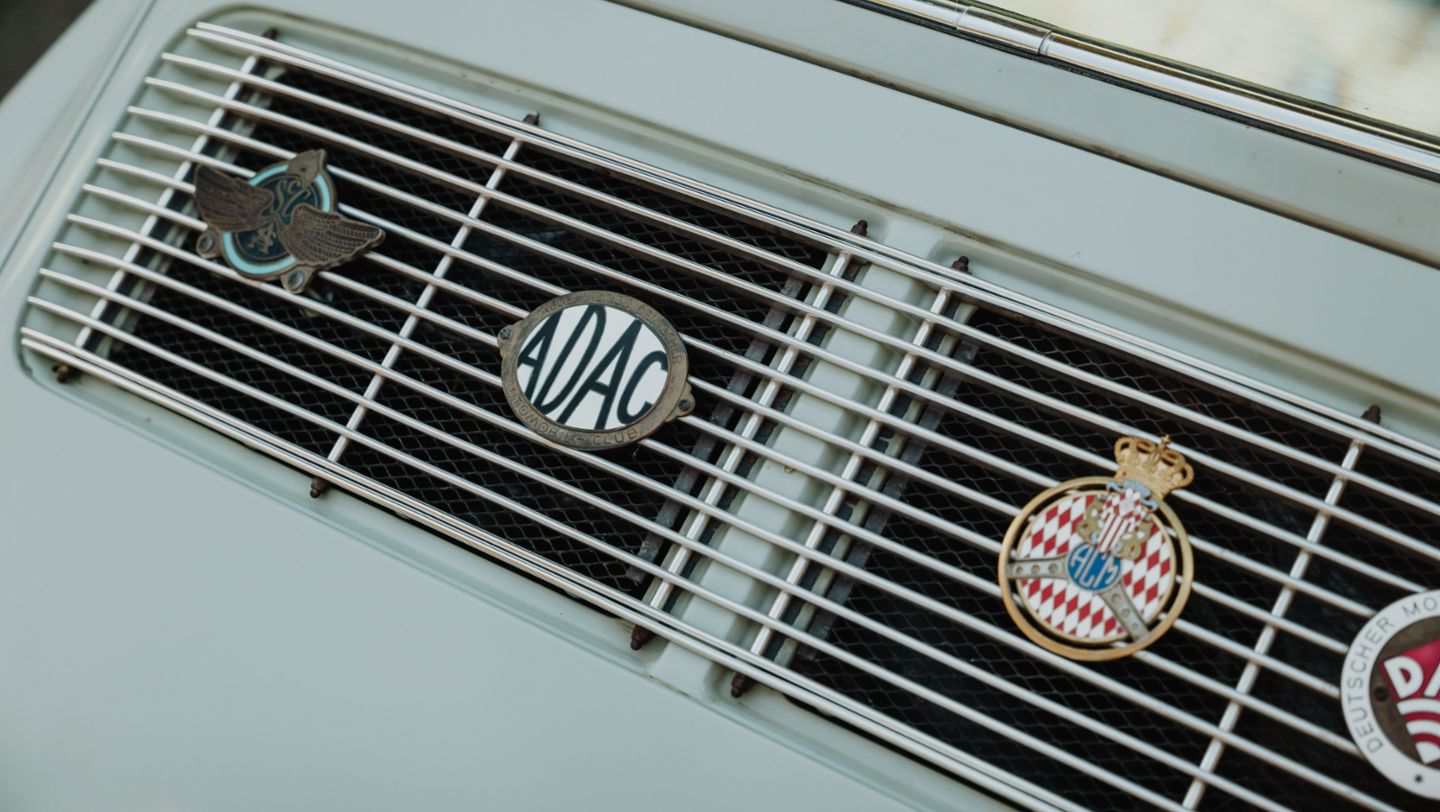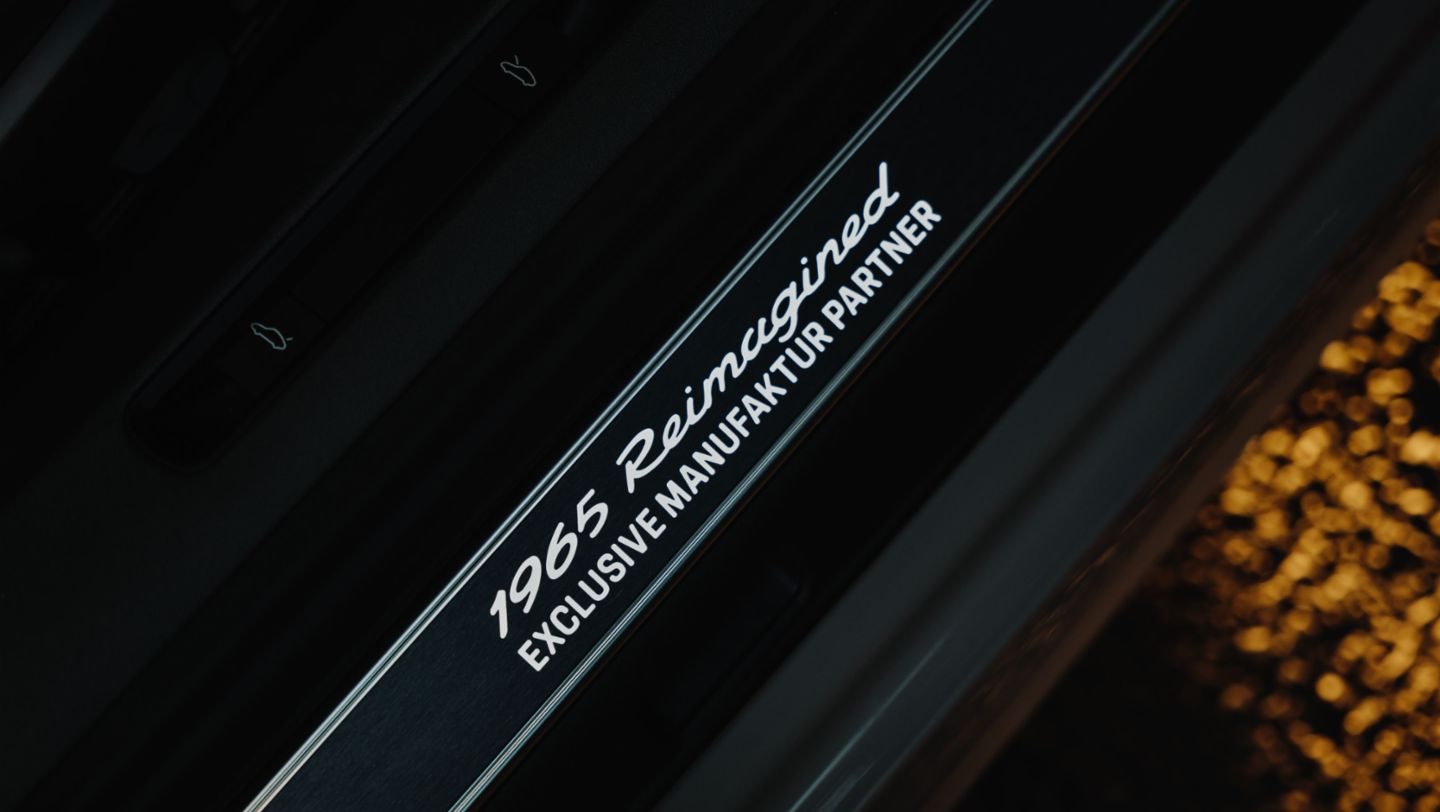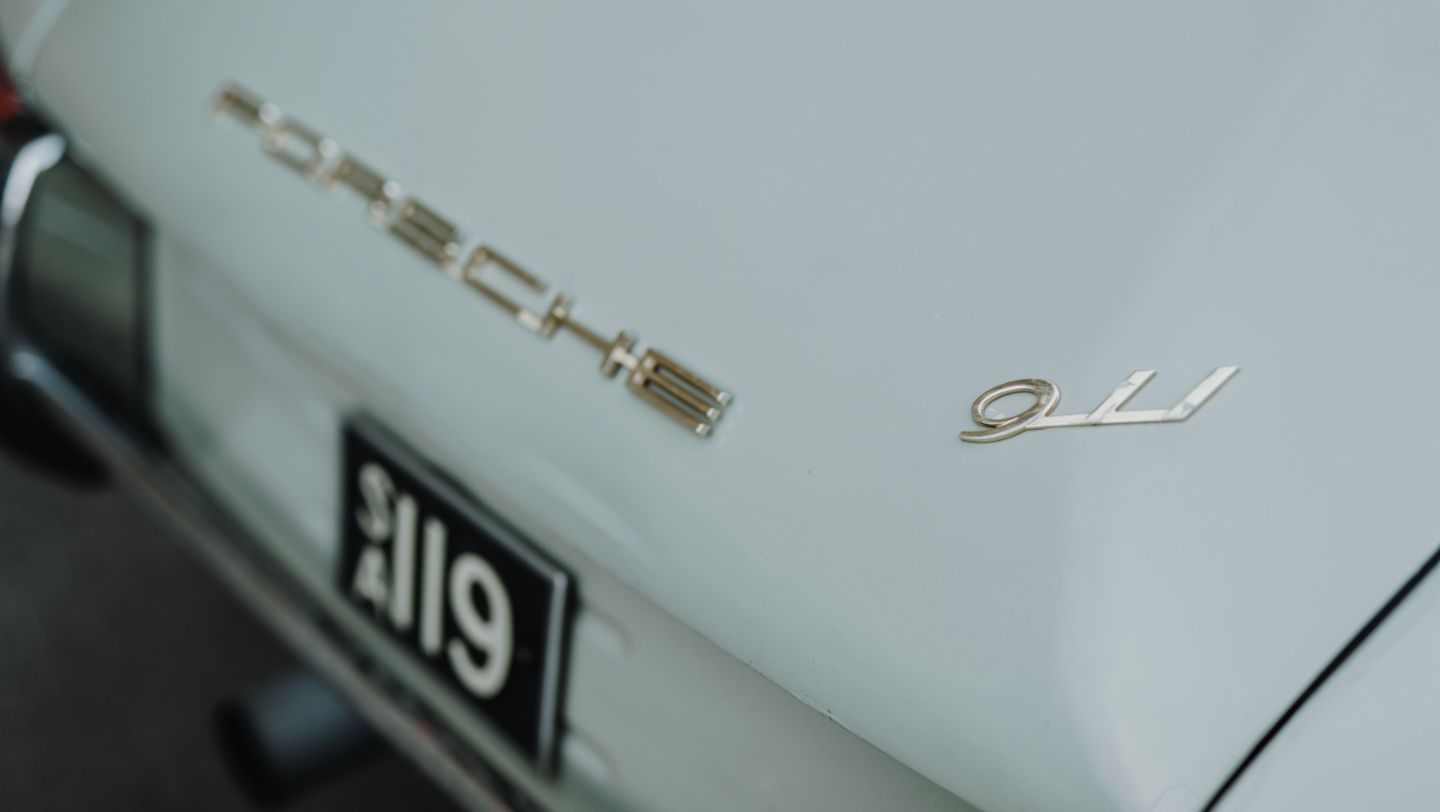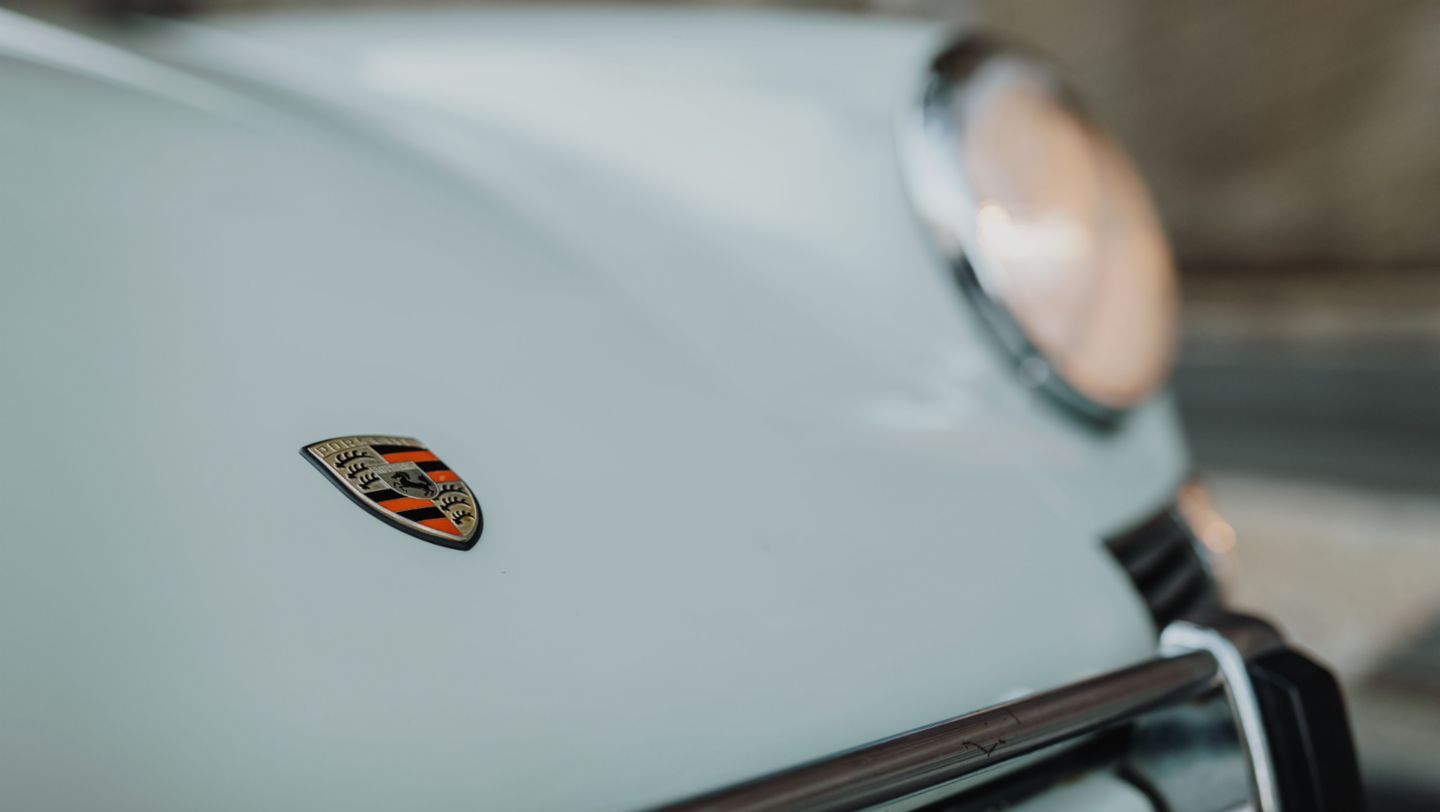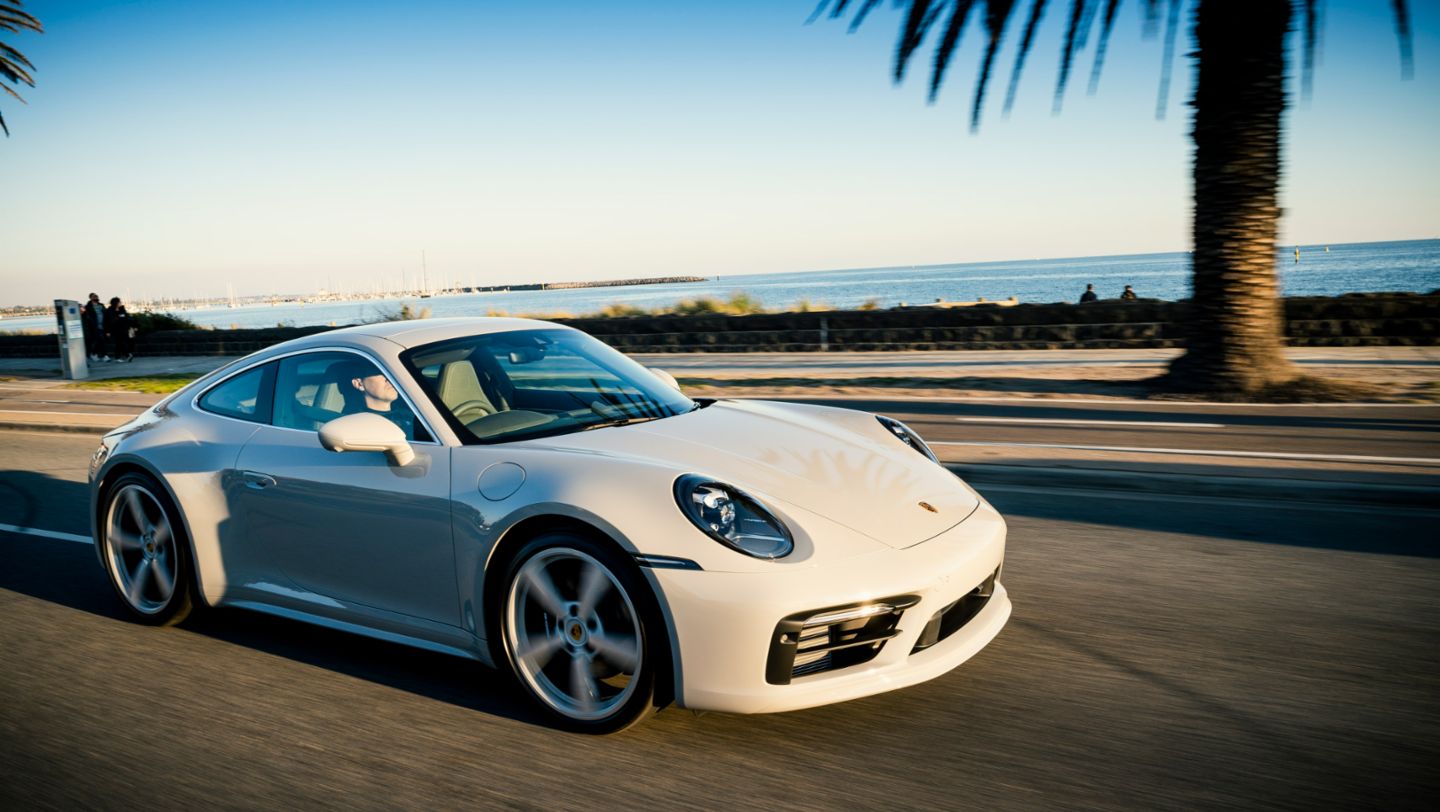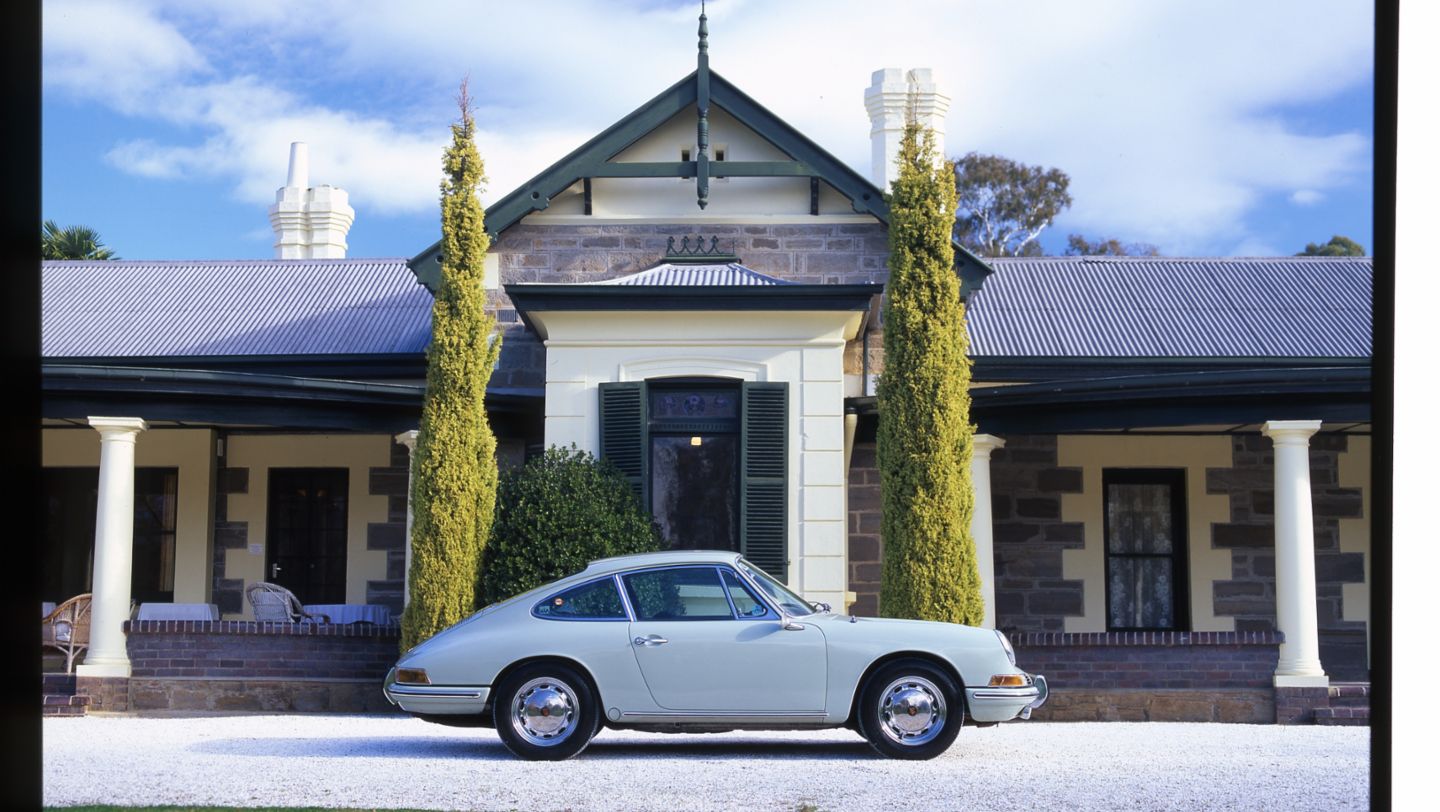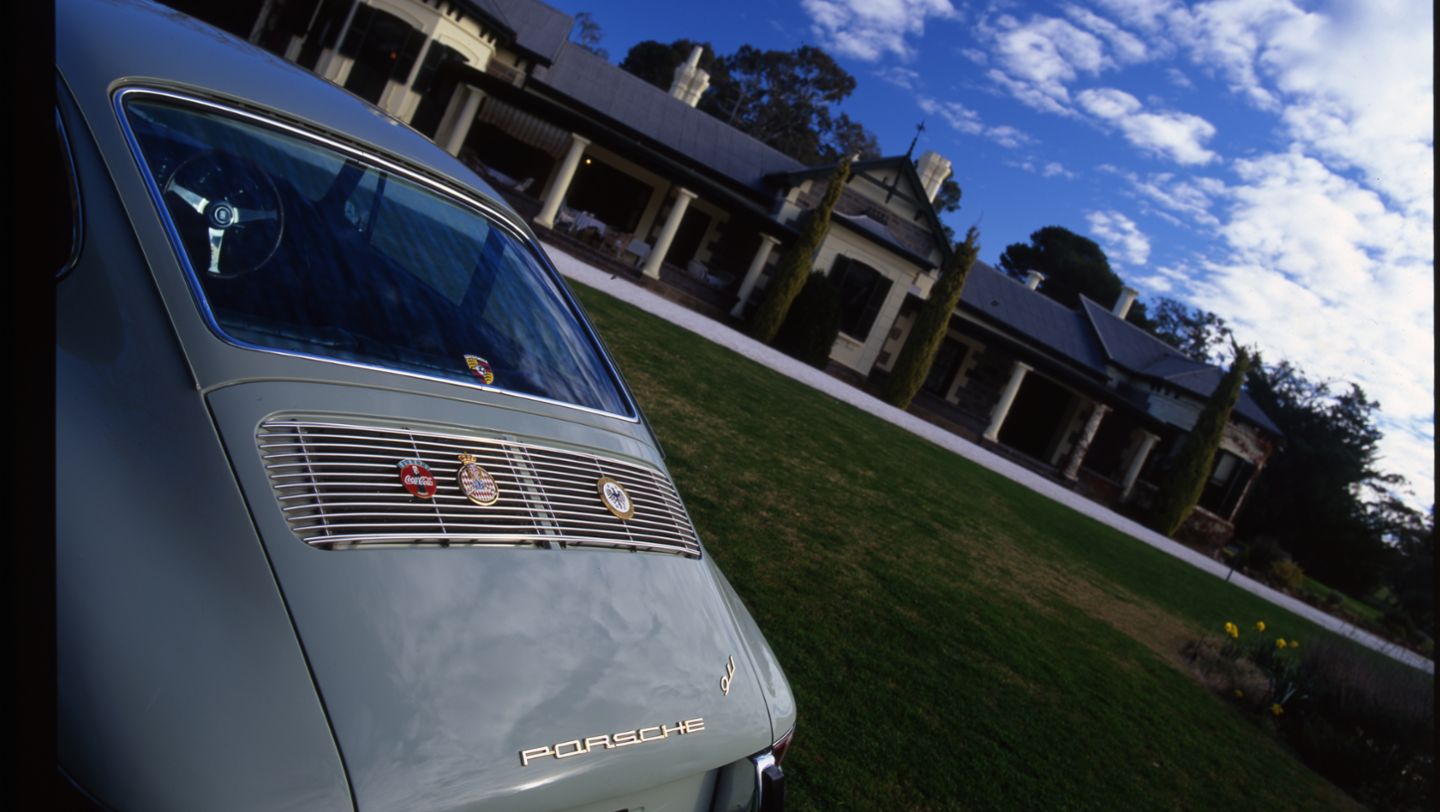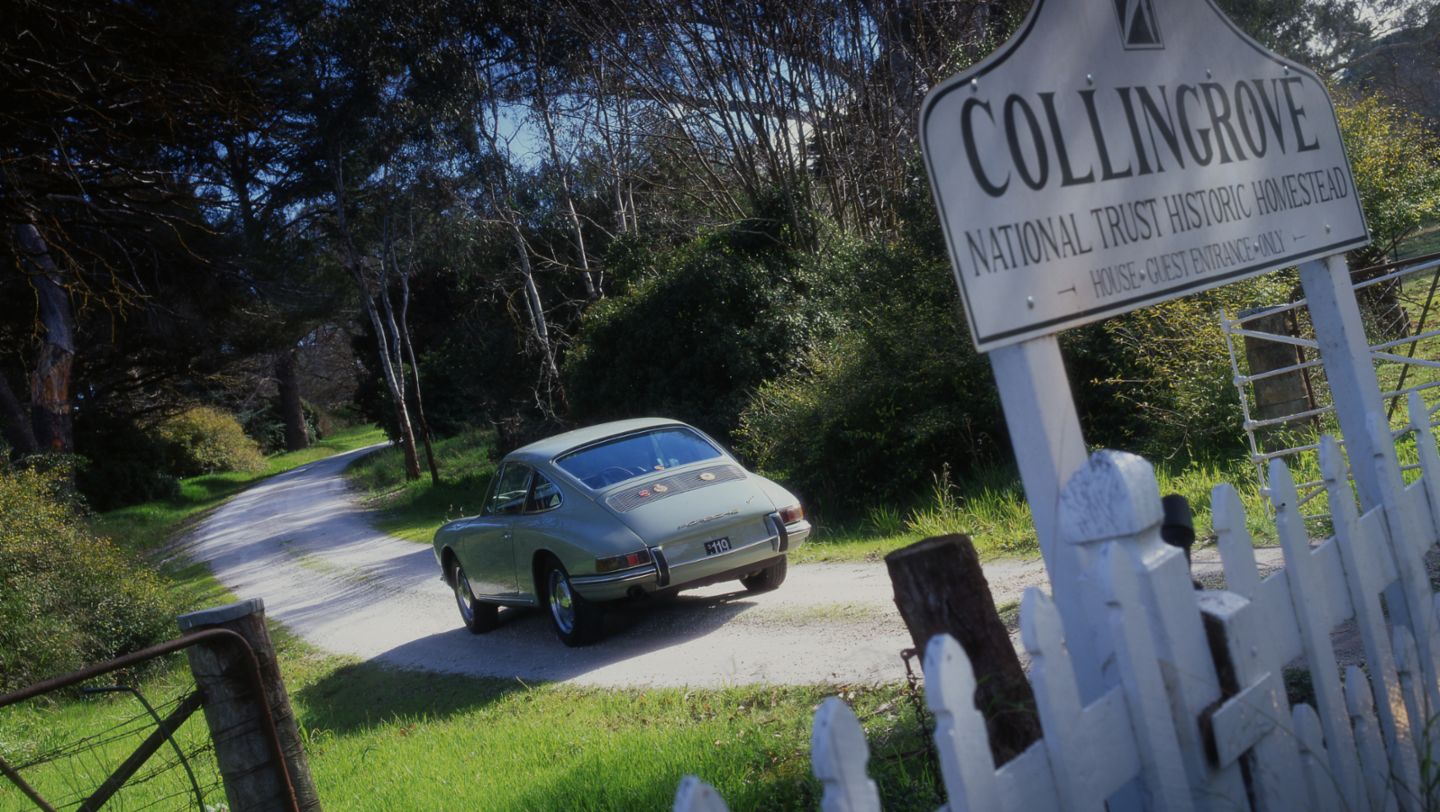The joint initiative of the two Porsche Centres will also see the 1965 model 911 on display alongside the new Porsche Exclusive type 992 models in both showrooms over the coming months.
“The concept was to take a 1965 911 and reimagine that car and what we could do with it in 2020,” said Dean Williams, New Vehicle Sales Manager, Porsche Centre Melbourne.
A film showcasing both the 1965 model 911 and the Exclusive Manufaktur 911 Carrera S models is a highlight of this special collaboration, as the vehicles journey through the most recognisable and iconic landmarks in both Sydney and Melbourne.
The first 911 sold in Australia was purchased by South Australian pastoralist Ron Angas, delivered by then Australian Porsche distributor Norman Hamilton in 1965. Angas’s choice of specification was a carefully considered one. The Porsche Exclusive Manufaktur program caters for similarly detailed specification choices today.
“It’s incredible that 55 years on from the original 911 delivery to Australia, we can now replicate some of the features in the modern vehicle. It showcases that the 911 is timeless,” said Lee Hallett, General Sales Manager, Porsche Centre Sydney South.
Porsche Centre Melbourne and Porsche Centre Sydney South are both Porsche Exclusive Manufaktur Partners. This certification guarantees the highest possible level of competence in the area of customisation options. Strict attention to detail and passion translates into precise individualisation of a Porsche.
Configured through the ‘Porsche Exclusive Manufaktur’ global network, the new Porsche Exclusive 911 type 992 models have been optioned as modern iterations of the original 1965 911 model.
The 1965‘ Steingrau’ (Stone Grey) 911 was specified with the then-optional 5-speed manual transmission, yet the 2020 Porsche Exclusive Manufaktur coupes are both equipped with the eight-speed Porsche Doppelkupplung (PDK) transmission.
‘Steingrau’ is no longer in the official 992-series colour palette, but ‘Crayon’ was judged to be its 2020 equivalent, with matching paintwork on its rear engine cover slats and 20-/21-inch Carrera Exclusive Design wheels, which have contrasting black calipers, just like in 1965. Porsche Exclusive Manufaktur SportDesign sideskirts, painted exterior mirrors and trim strips in a high-gloss finish, are finishing touches that complement its colour-scheme.
The early model 911 boasts green leather contrasted beautifully with the car’s standard maple yellow dashboard timber trim and matching wood-rimmed steering wheel, which framed its ‘English’ instrumentation perfectly.
The modern day cars feature 14-way, electric sports seats with memory package and the Porsche crest embossed on their headrests, with Agave Green Club leather, contrasting Crayon stitching and matching Agave Green seat belts. The brushed aluminium door sill guards in dark silver are illuminated and personalised with ‘1965 Reimagined‘. To further emulate the original 911’s interior leather and decorative timber ambiance, both type 992s have been fitted with an interior package in environmentally-responsible Paldao Dark from Porsche Exclusive Manufaktur.
It’s a modern day homage that captures the spirit of its ancestor, but in a thoroughly modern, appropriate way.
The first Australian 911
When Angas originally placed a £2000 deposit on the new six cylinder Porsche model in 1964, Hamilton had completed the order for a Porsche ‘901’. But by the time the ‘Steingrau’ (Stone Grey) sportscar arrived the following year, the model line had been renamed 911 due to a trademark dispute with Peugeot.
On 1 September 1965, the first Australian registered Porsche 911 was delivered to Ron Angas and was garaged at his family home of Collingrove in the Barossa Valley, north of Adelaide. Locals still recall the stir it caused whenever it came to the nearby township of Angaston for shopping.
Before handover to Angas, the 911 was fitted with a modified silencer and subsequently dyno-tested at 134 horespower (100kW), four above standard. It was also fitted with Angas’ distinctive black and white South Australian number plates ‘119’, which had graced the Angas family’s cars for many years – and also a happy mirror coincidence of its model type number.
Outside, sealed beam headlights were fitted to illuminate the backroads of Angaston in South Australia’s Barossa Valley, where the rasp of the distinctive-sounding air cooled boxer ‘six’ would soon reverberate regularly from Lyndoch to Nuriootpa, while it wore the further distinction of coloured Porsche crests adorning its chromed hub caps.
Angas also used to exercise the 911 regularly at the ‘Collingrove’ hillclimb he had built on his property, where Norman Hamilton’s son, Alan, would later claim Porsche’s first National Motor Racing title when he won the Australian Hillclimb Championship in October 1966 in his Bergspyder fitted with a six-cylinder Porsche 906 two-litre engine.
Angas sold the 911 in February 1969 to an architect friend, Roy Wilson, by which stage the car had covered 54,000 miles.
The car’s current owner, Adelaide Porsche enthusiast Stewart Kay, first saw it when he interviewed Wilson for a university paper in the late 1980s. Secreted in the shadows of Wilson’s garage, Kay noticed it was rather like the one at the Porsche Museum he had recently read about in an English magazine, which was then cited as the “oldest known 911”.
To his surprise, the Museum car’s chassis number was revealed in the article as 302 503, exactly 1000 cars later than the one he had just seen.
Kay immediately made enquiries to the factory through Porsche Cars Australia, who confirmed that the 911 was indeed one of the very first right hand drive 911s ever built.
After initially pleading unsuccessfully with Wilson to sell him the car, Kay got a phone call in 1992 asking “Do you still want it?”. A price was negotiated immediately.
By then the 911 had covered over 85,000 miles over the previous 23 years, but it was completely original and wore its age well. And of course it came with its original keys, original owners’ manual and complete service books.
Kay still owns the historic 911 today, and it remains in exceptionally original condition. It is usually housed in a museum at The Bend Motorsport Park in Tailem Bend, South Australia.
The joint initiative is a highlight for Australia’s two Exclusive Manufaktur Partners, Porsche Centre Sydney South and Porsche Centre Melbourne which will see the 1965 model 911 on display alongside the new Porsche Exclusive type 992 models in both showrooms over the coming months.
